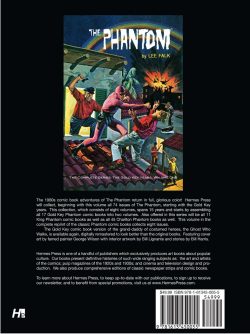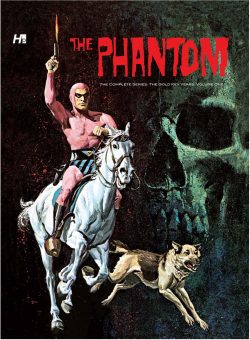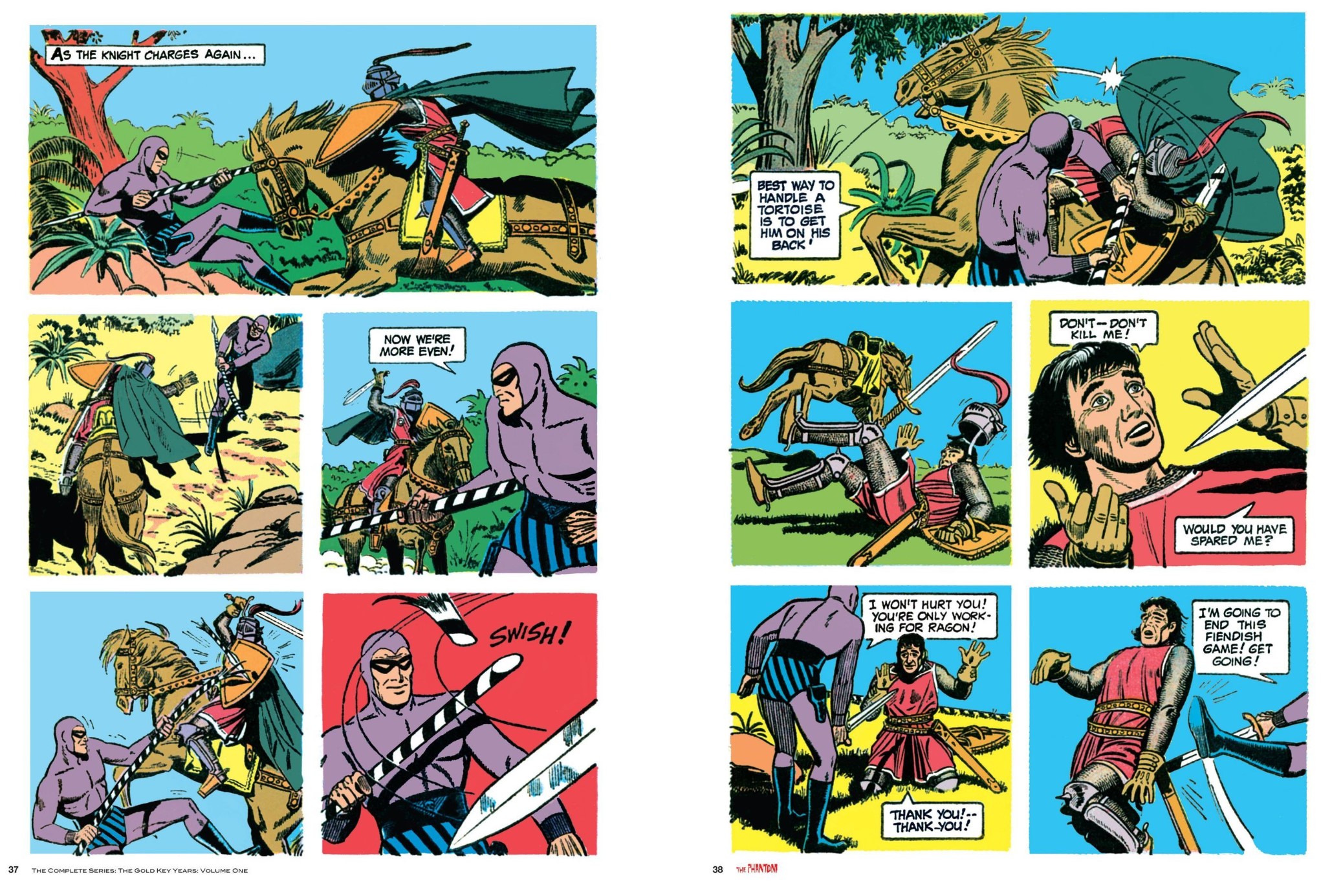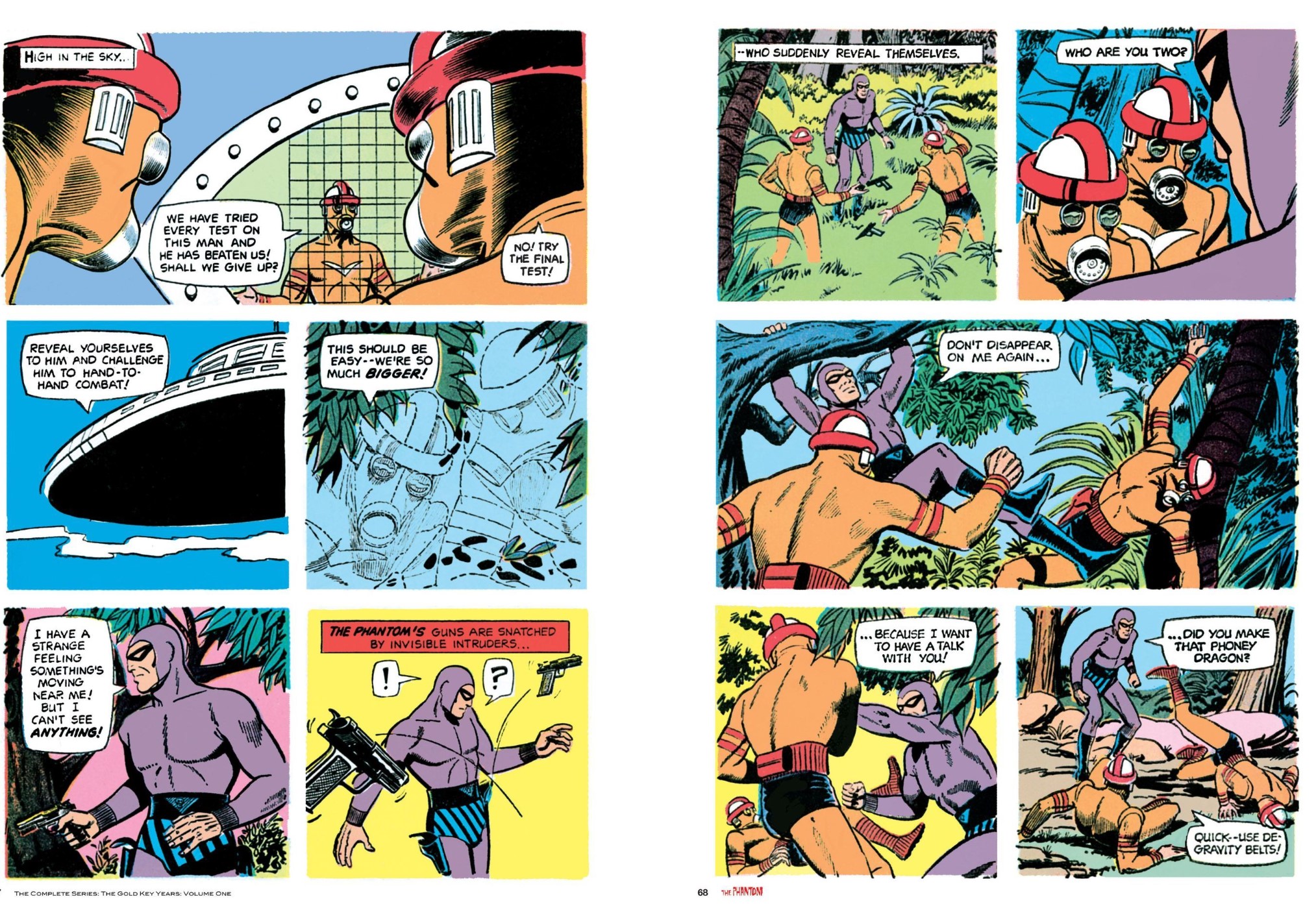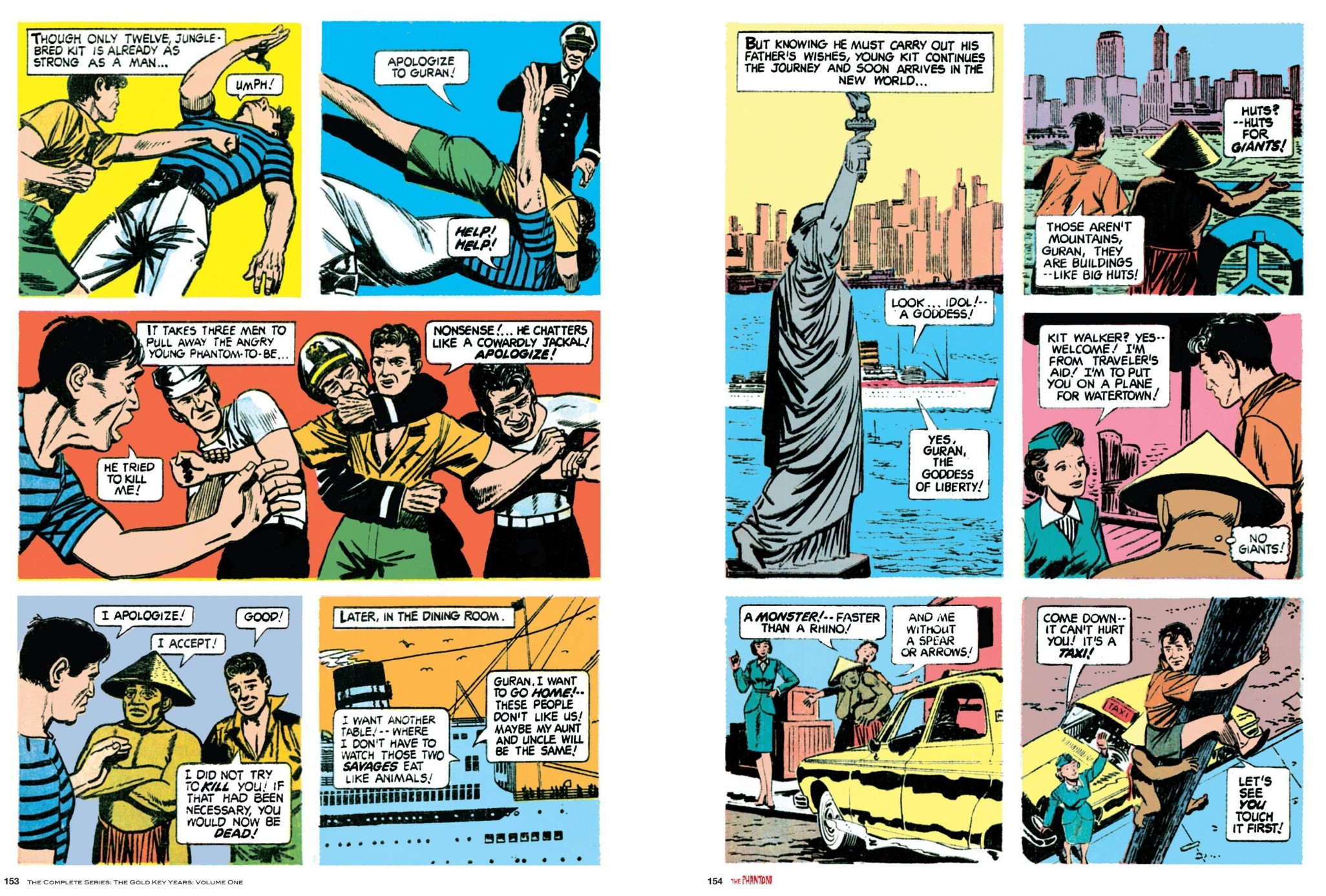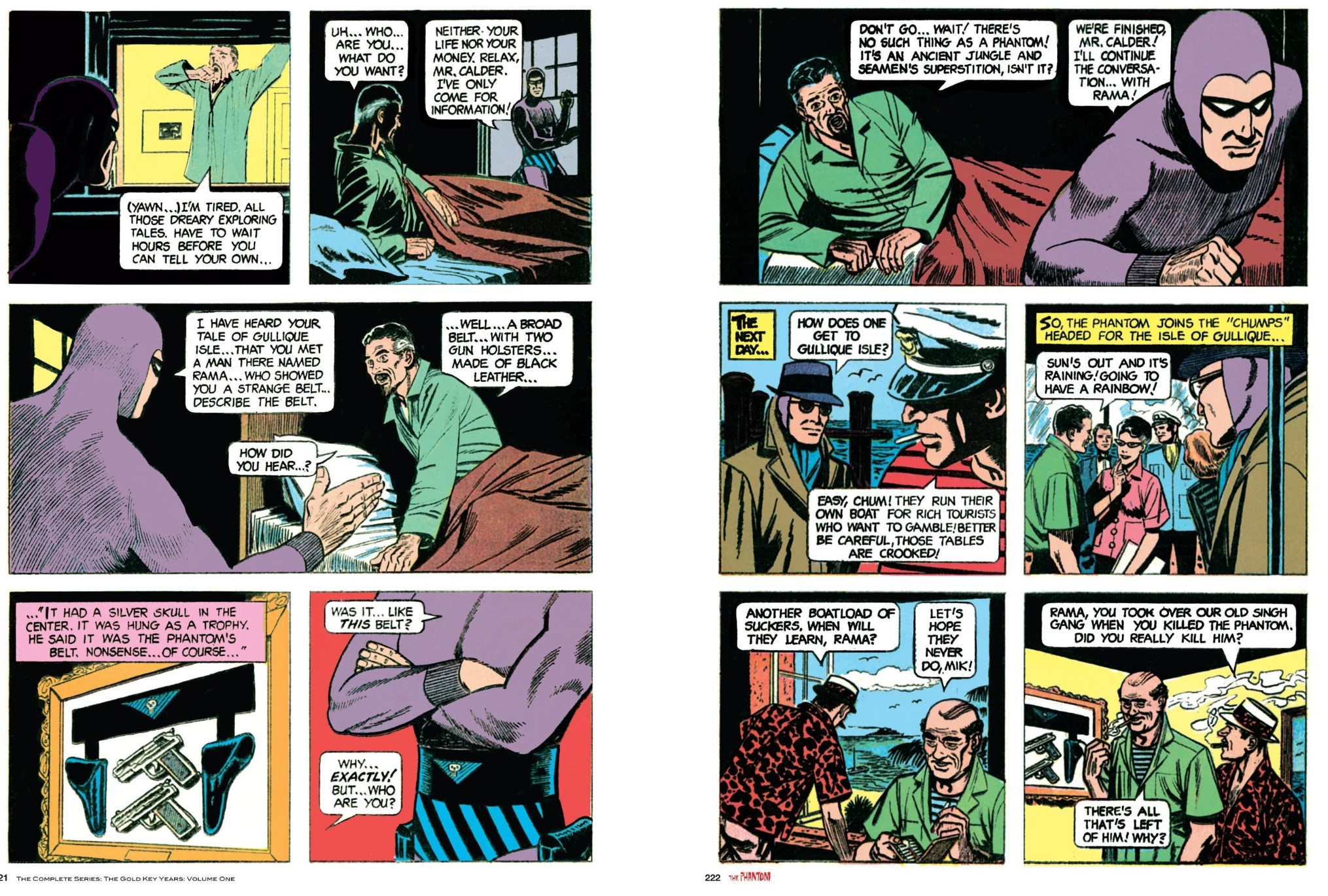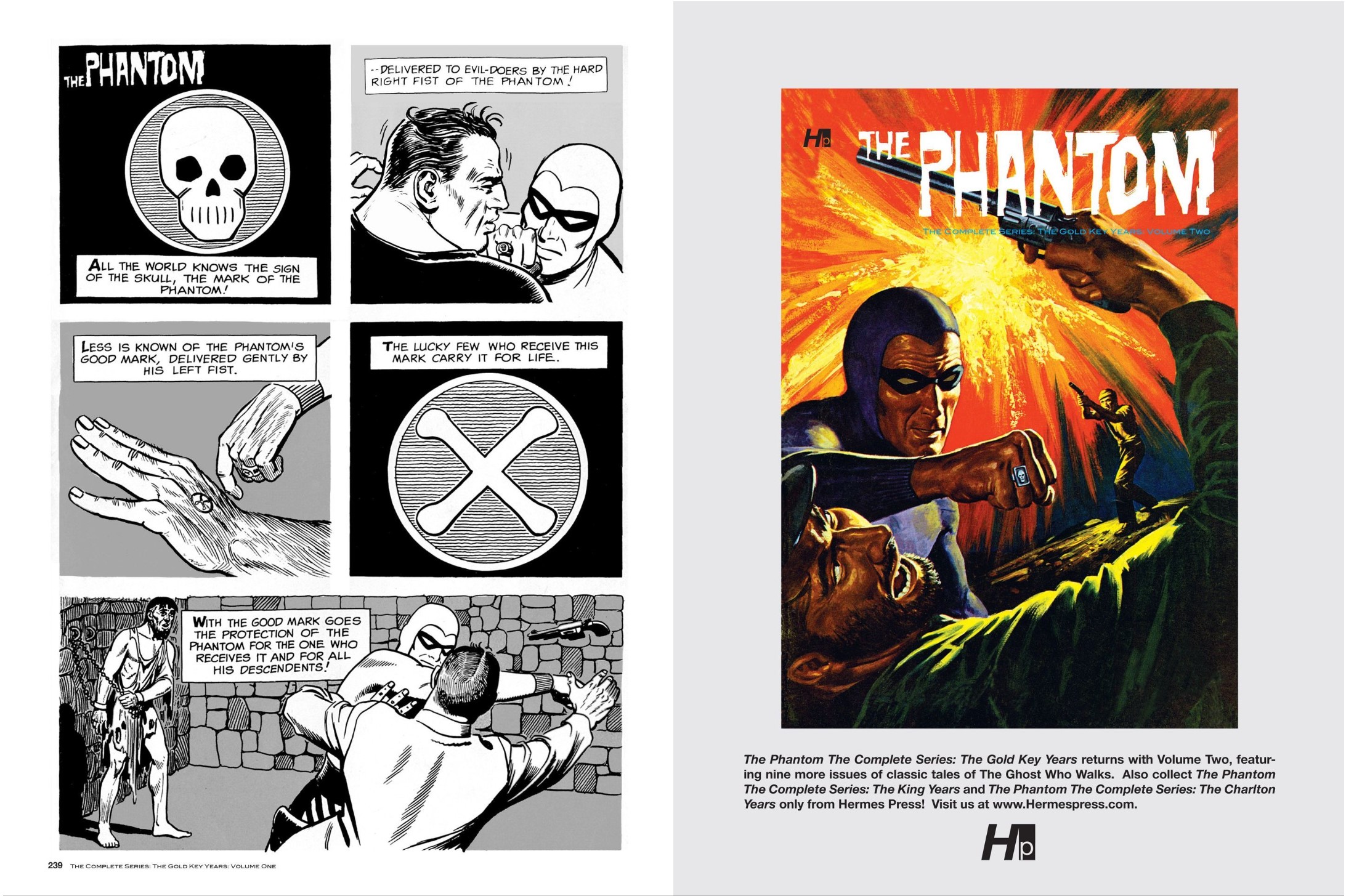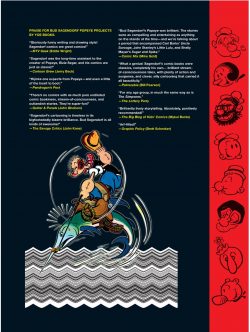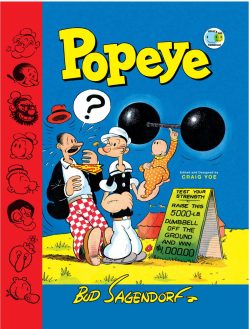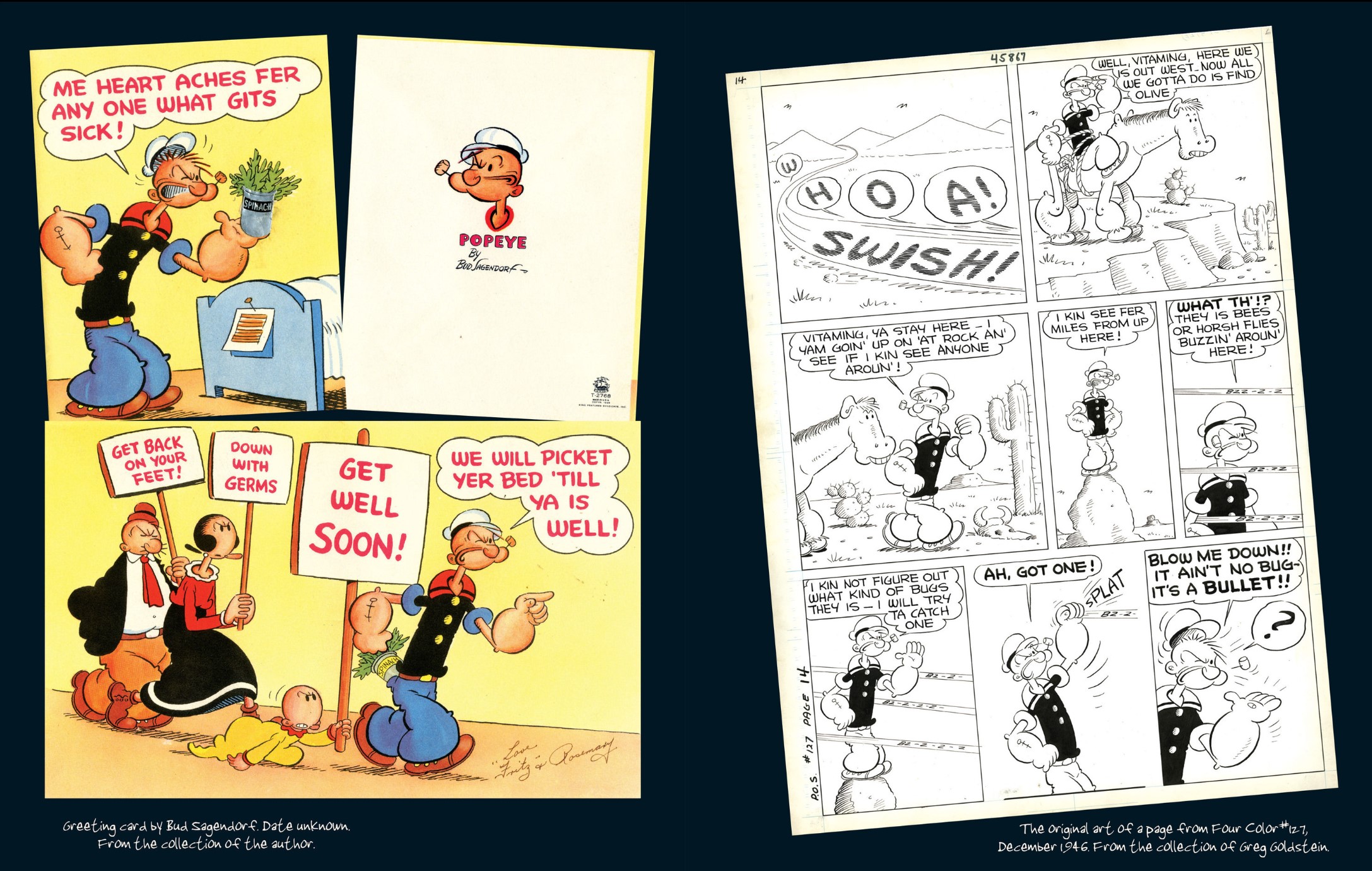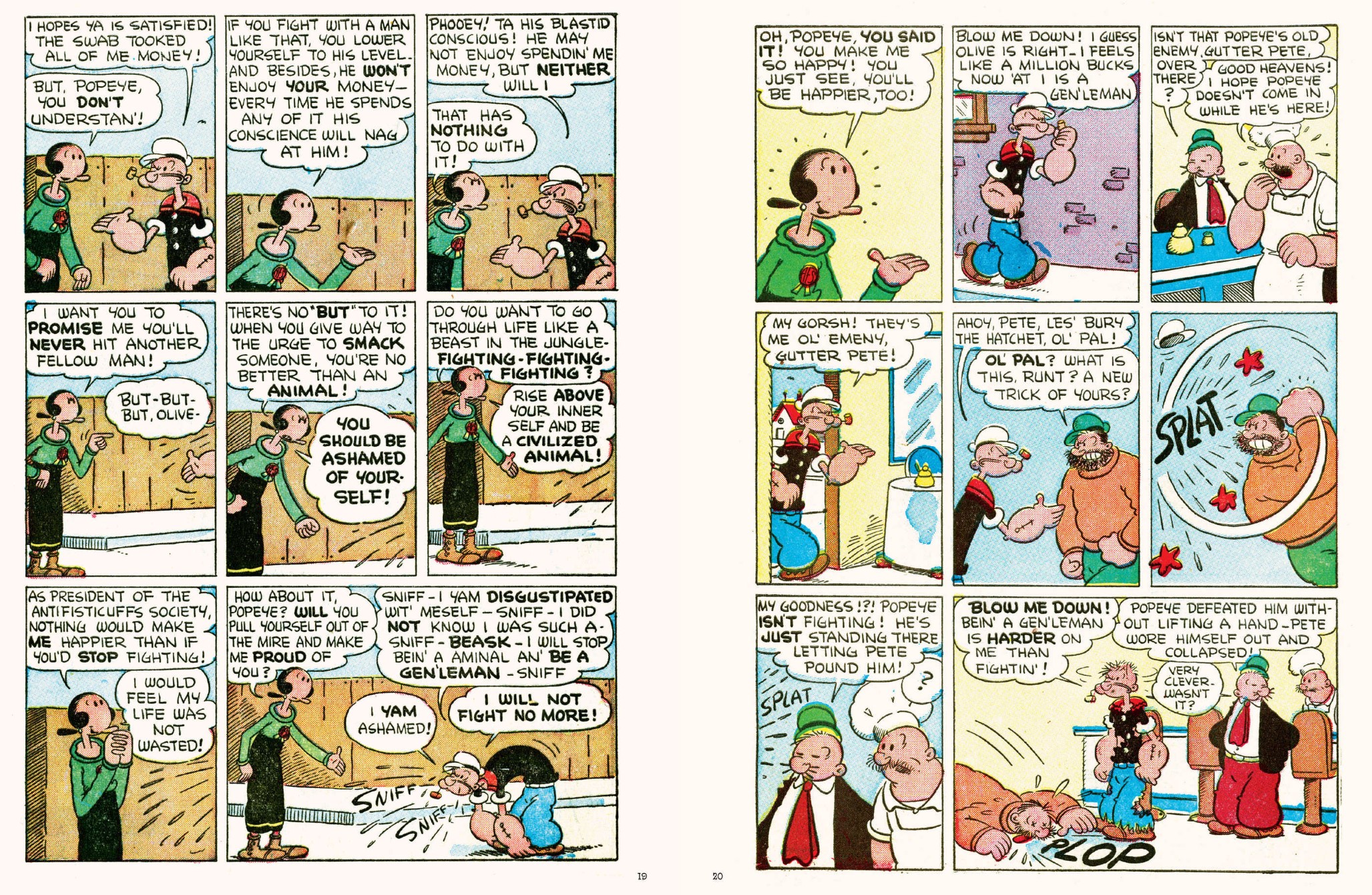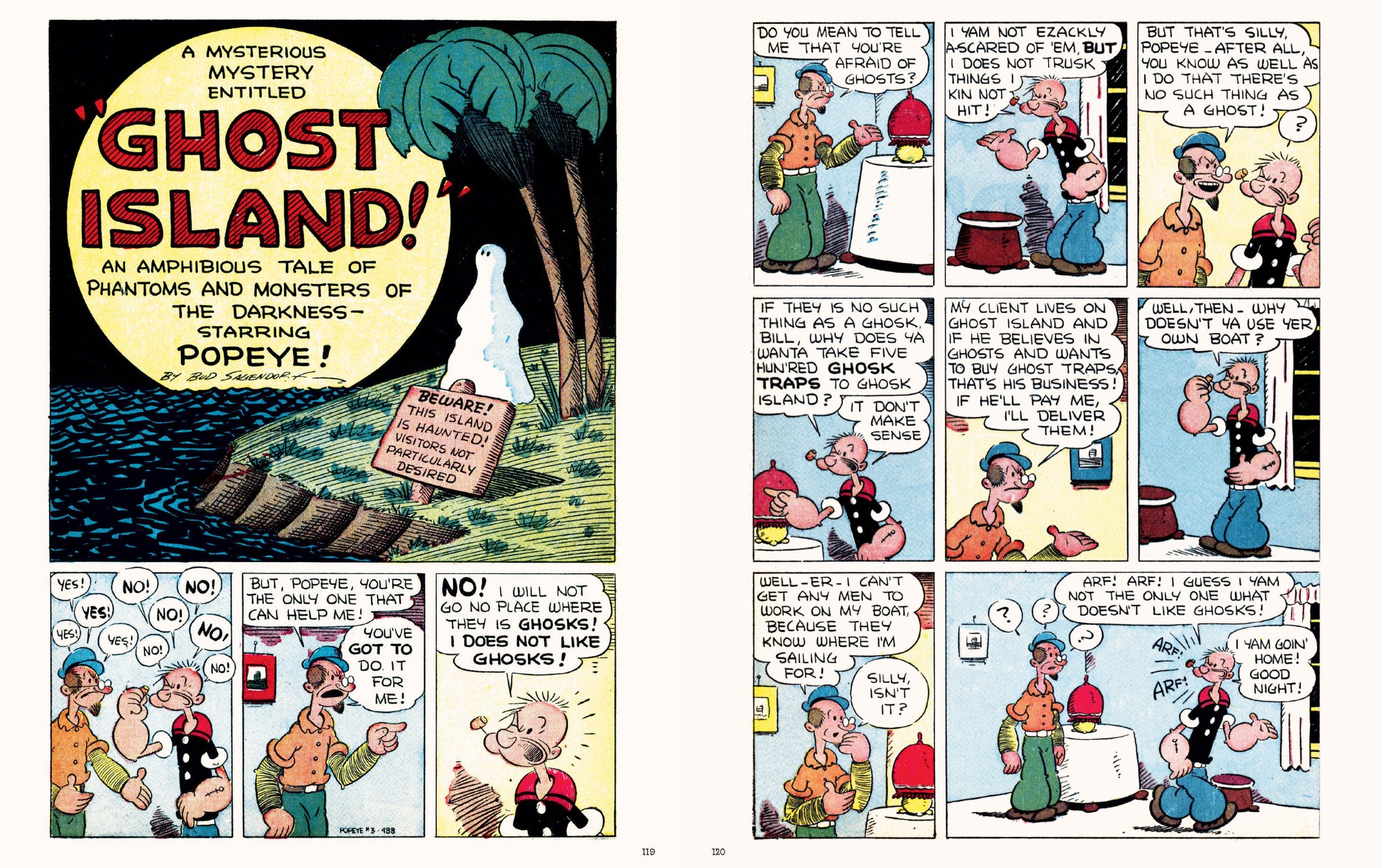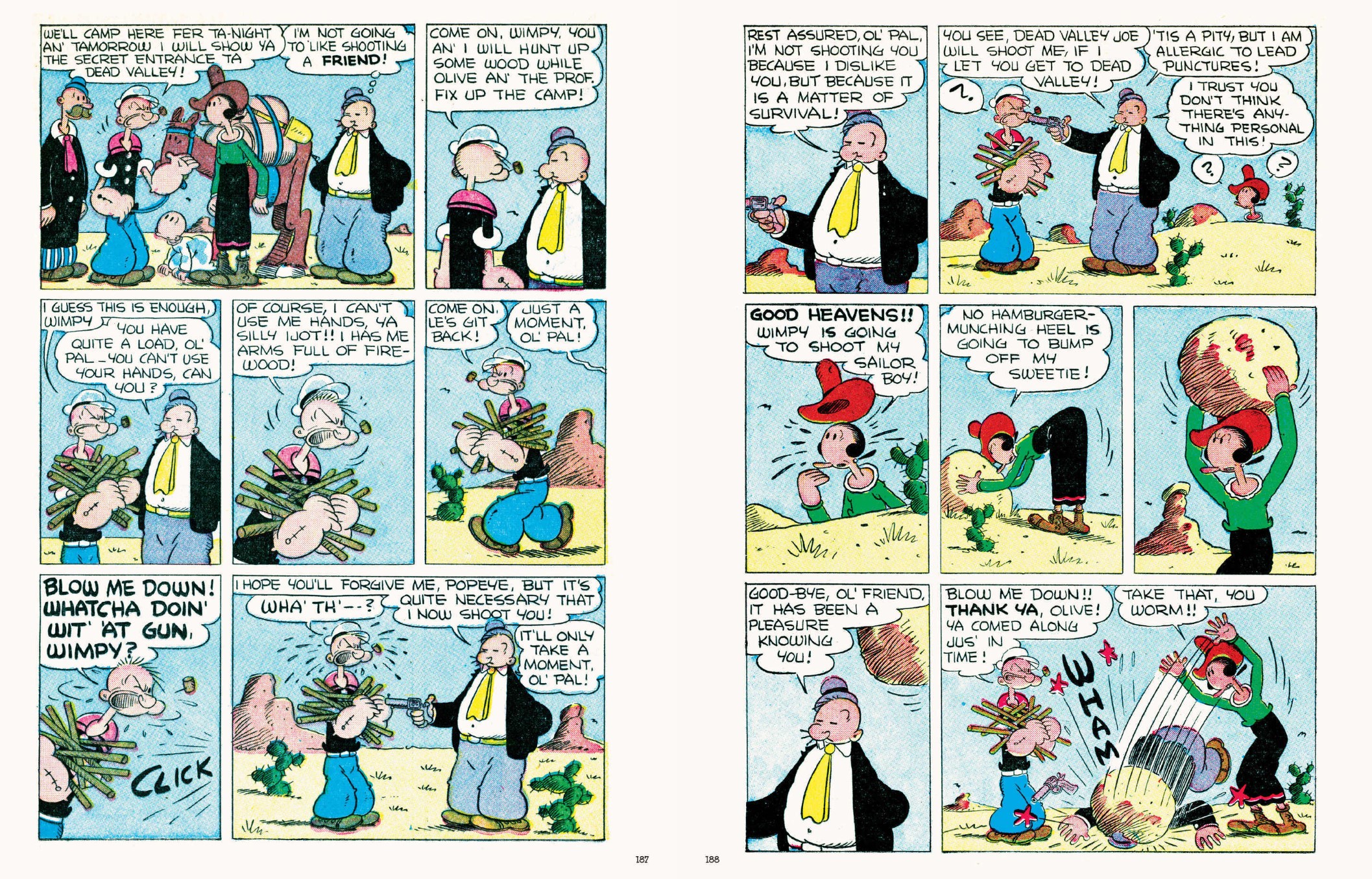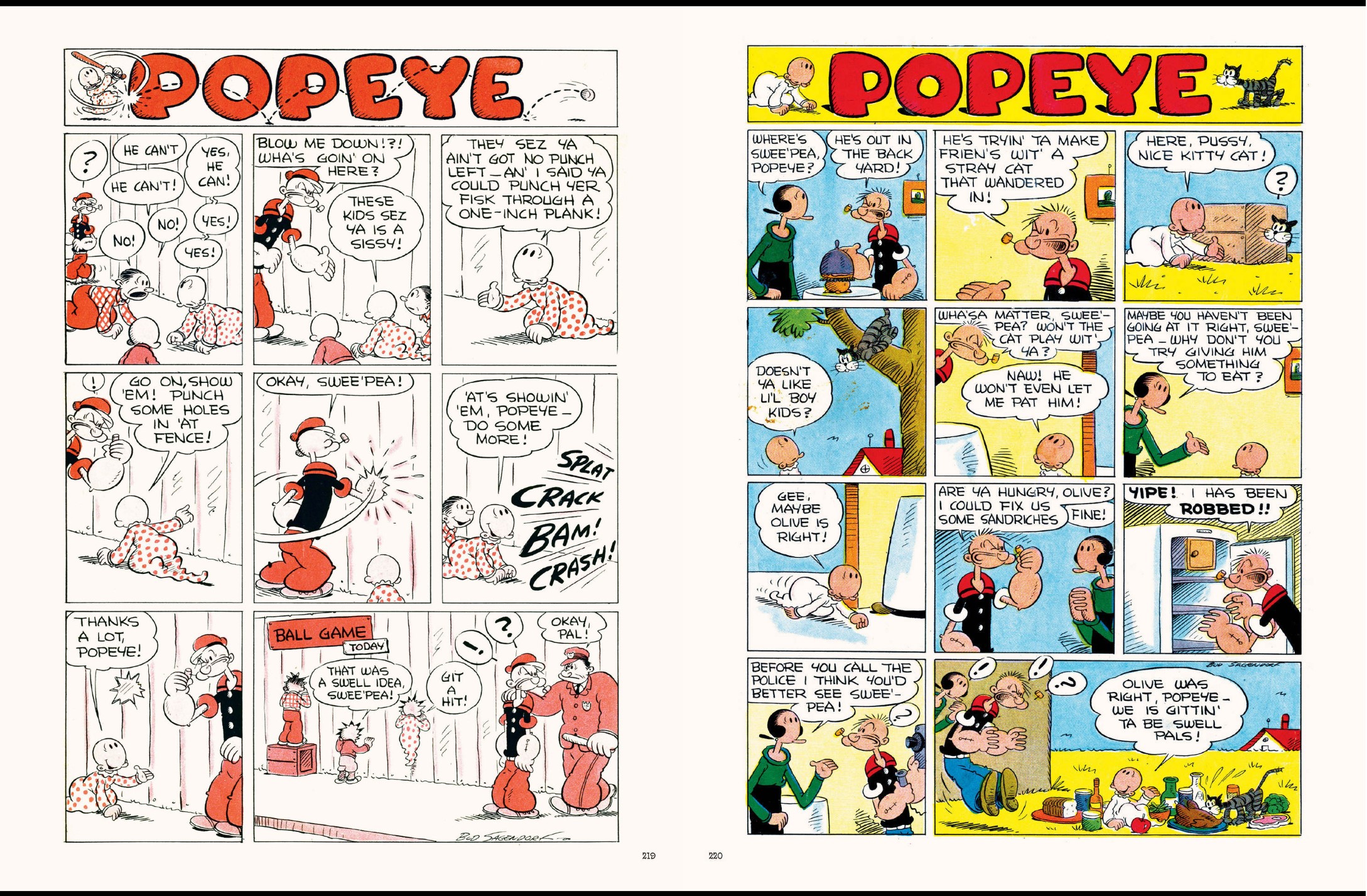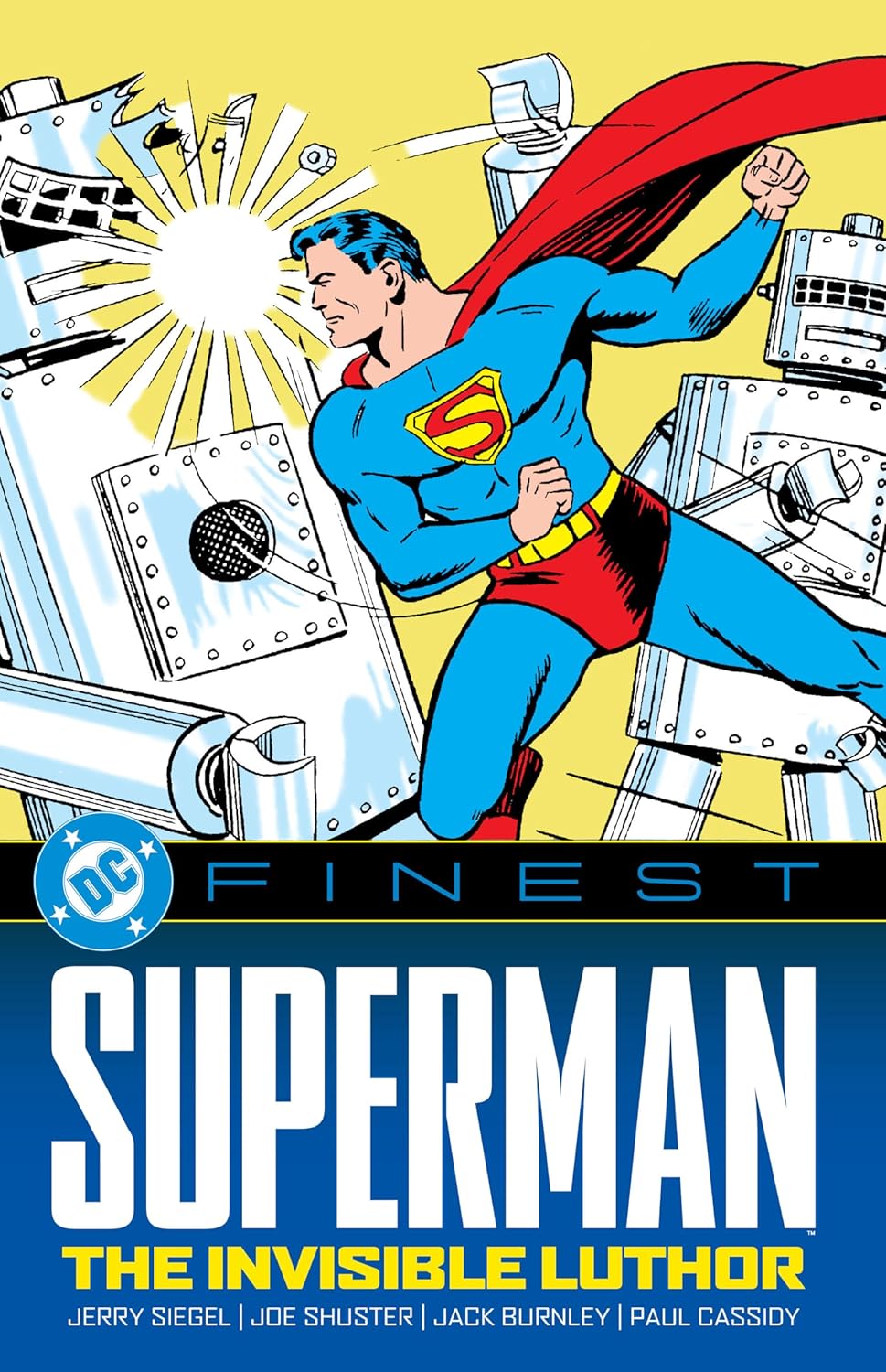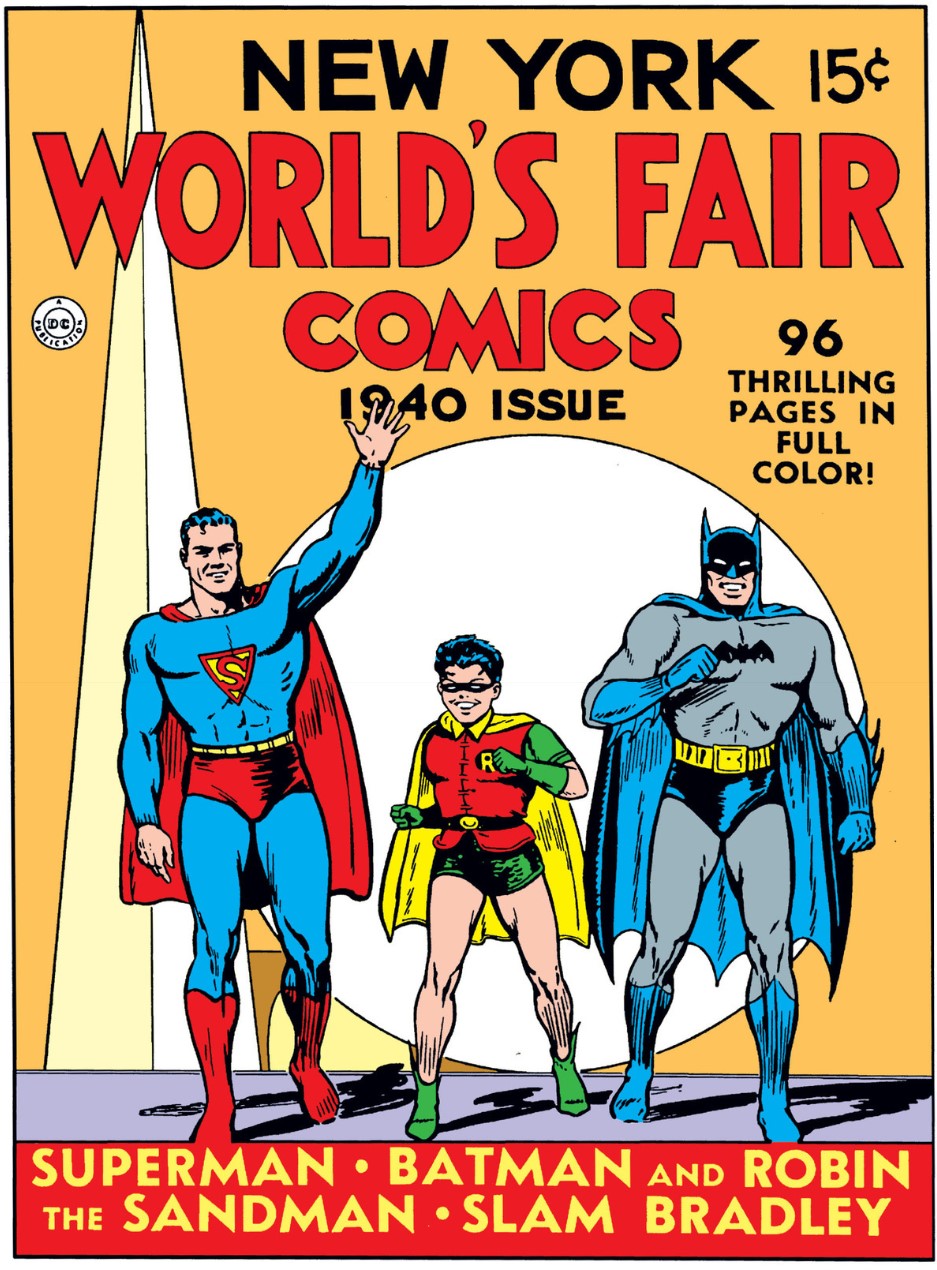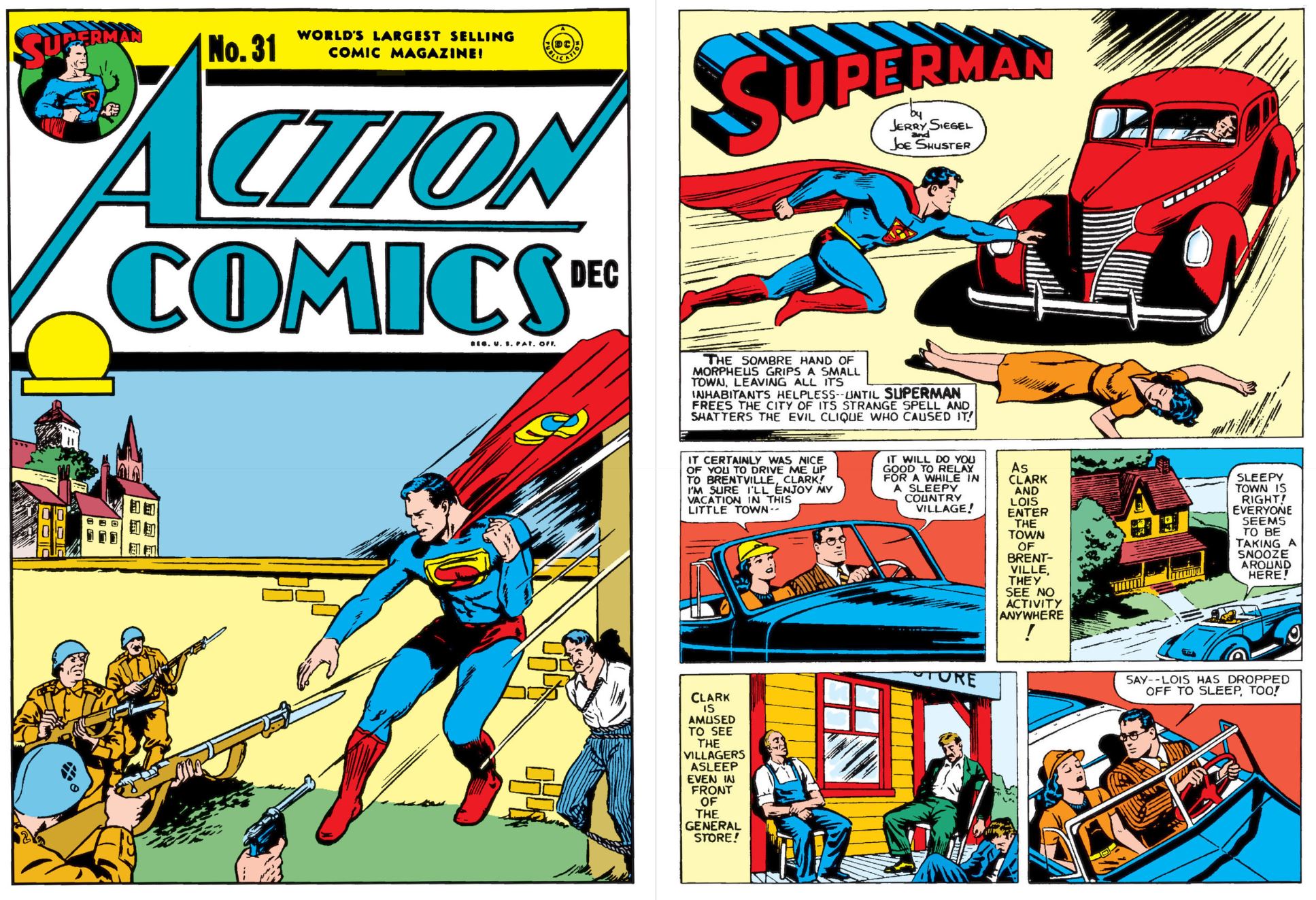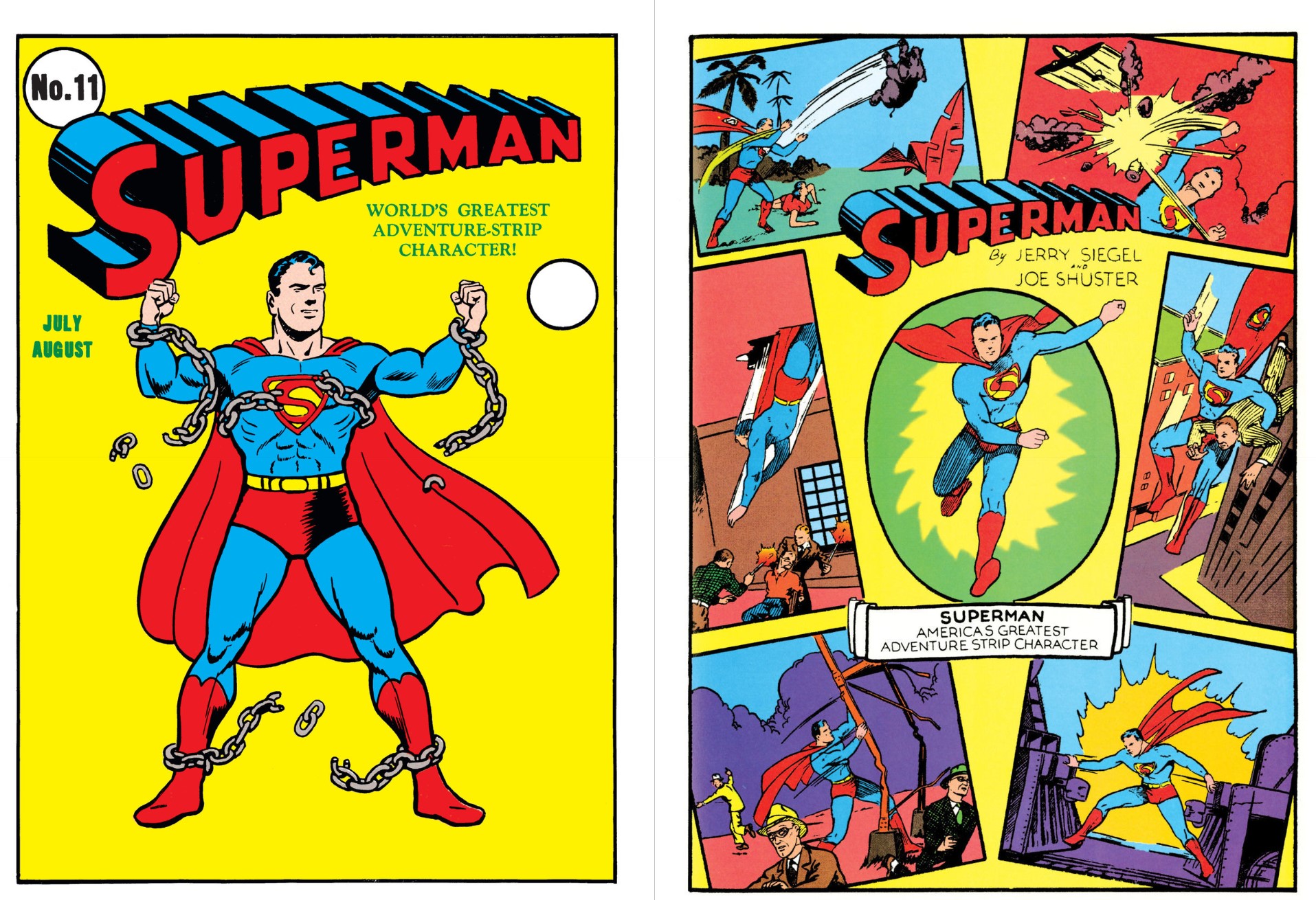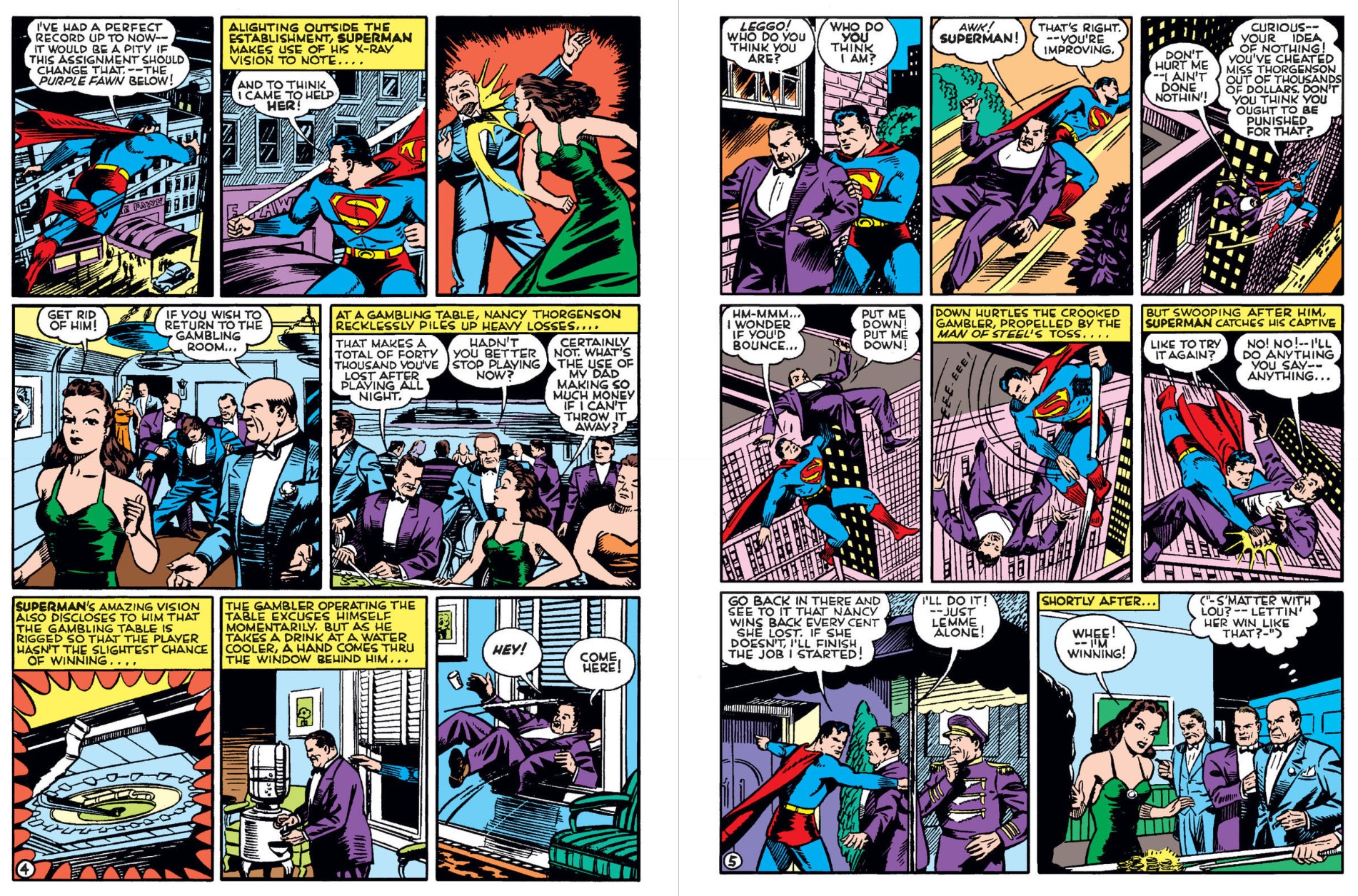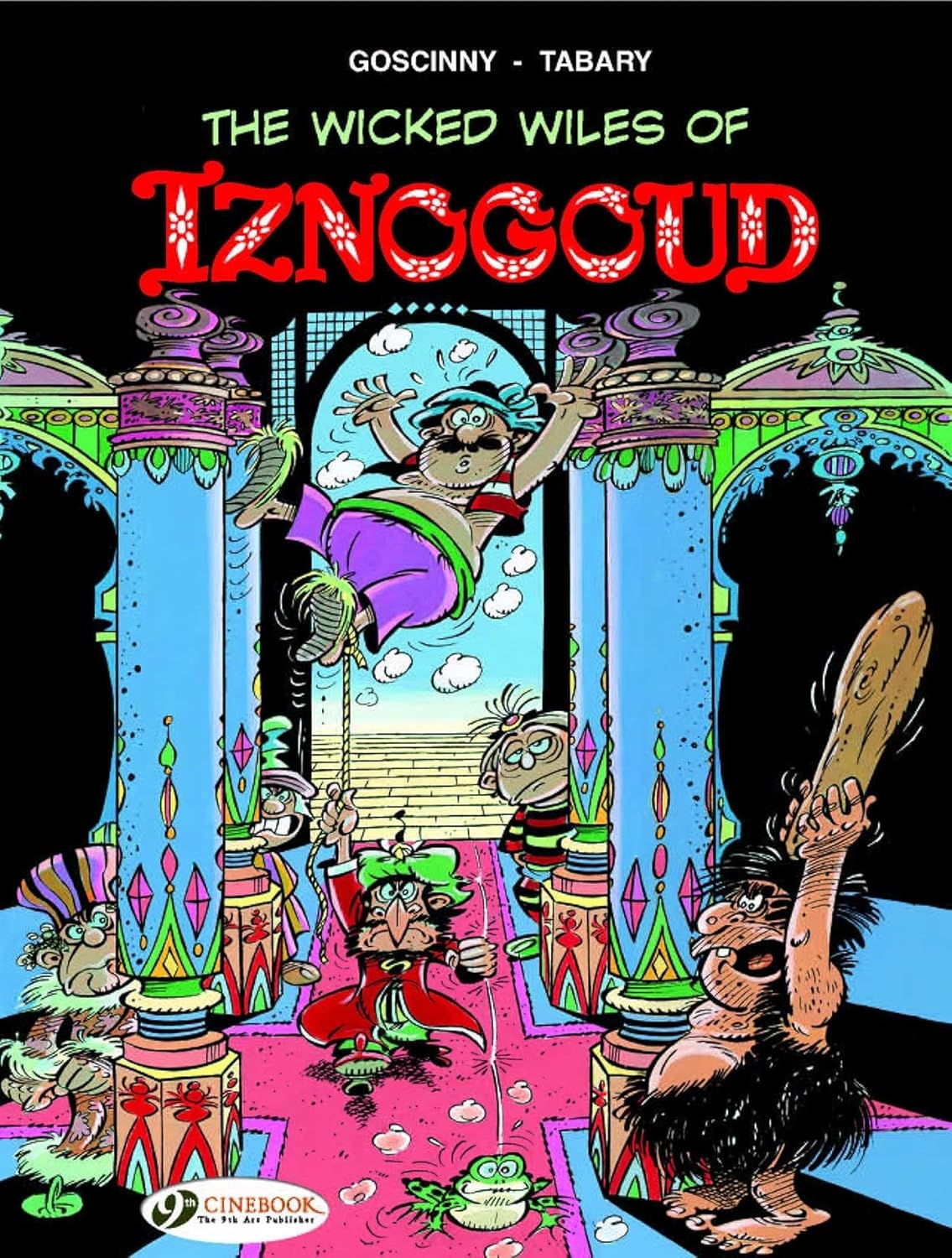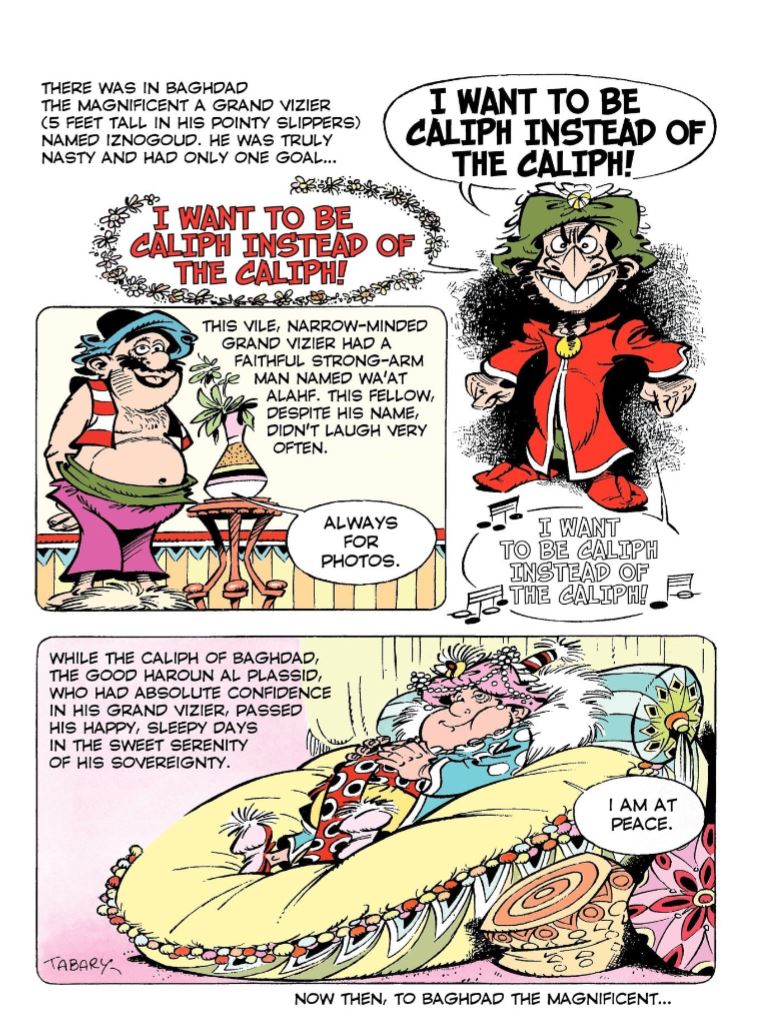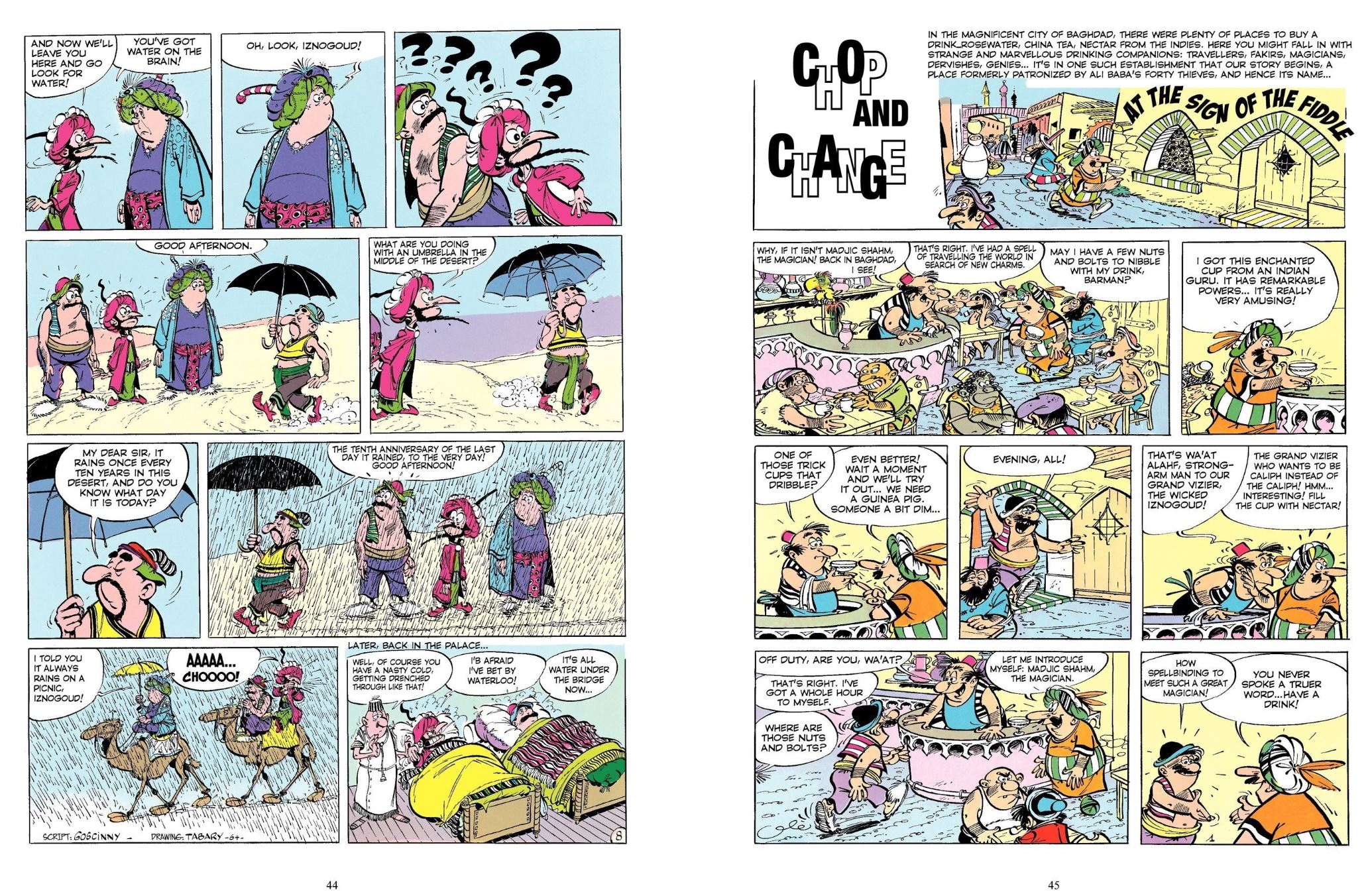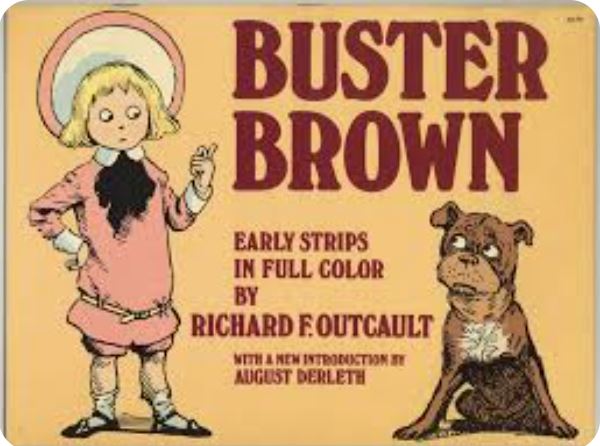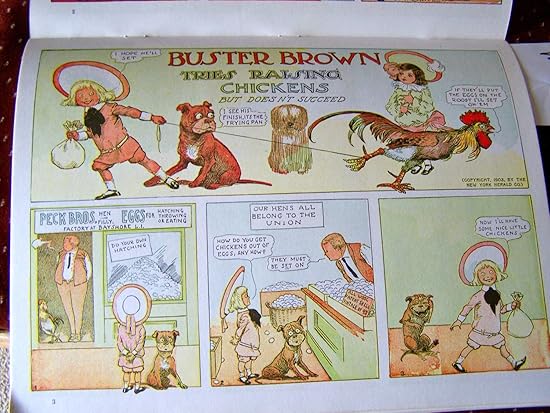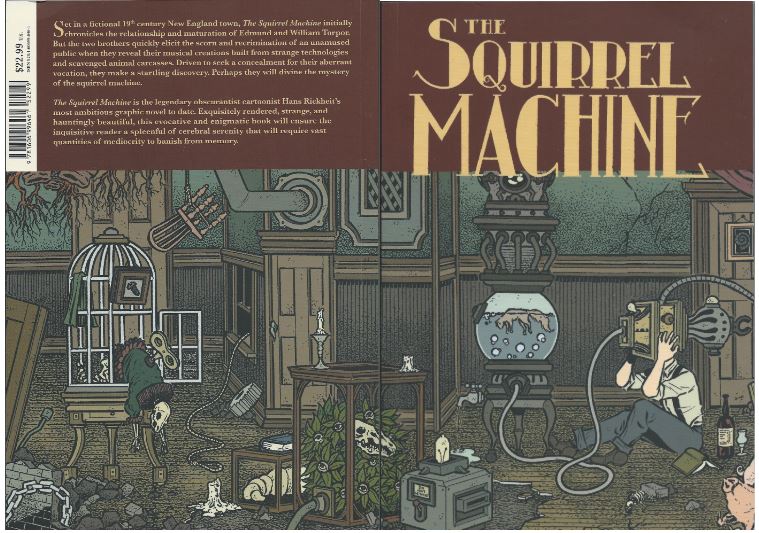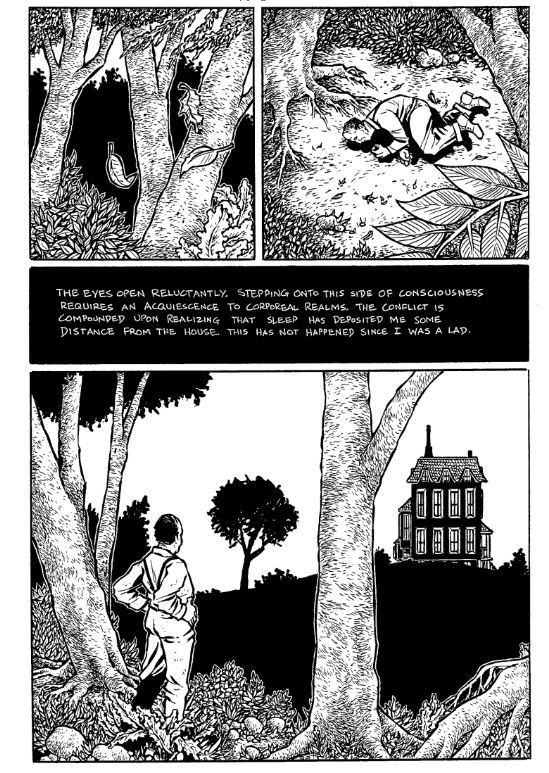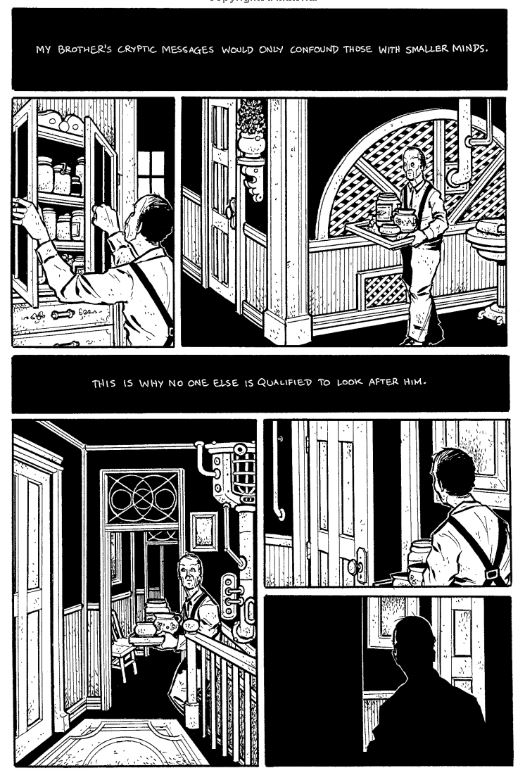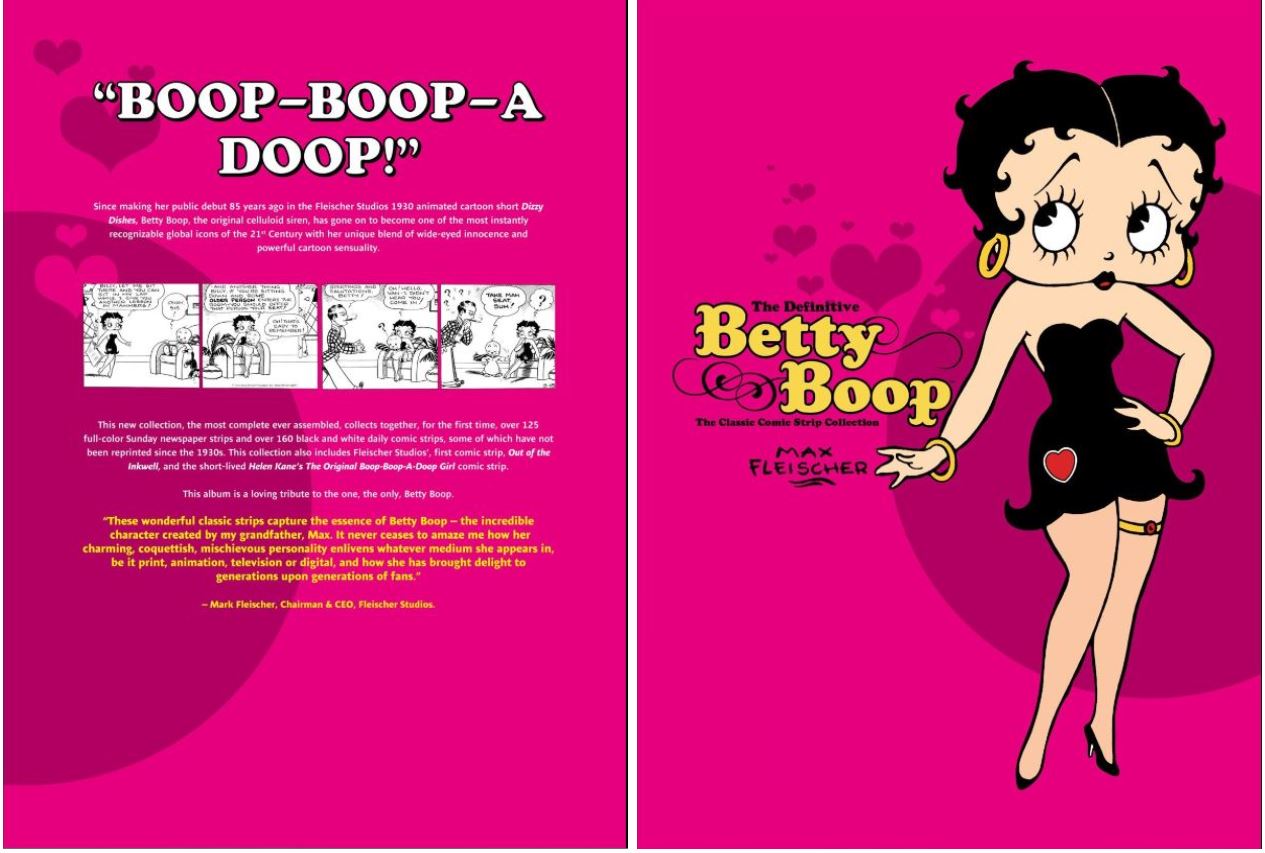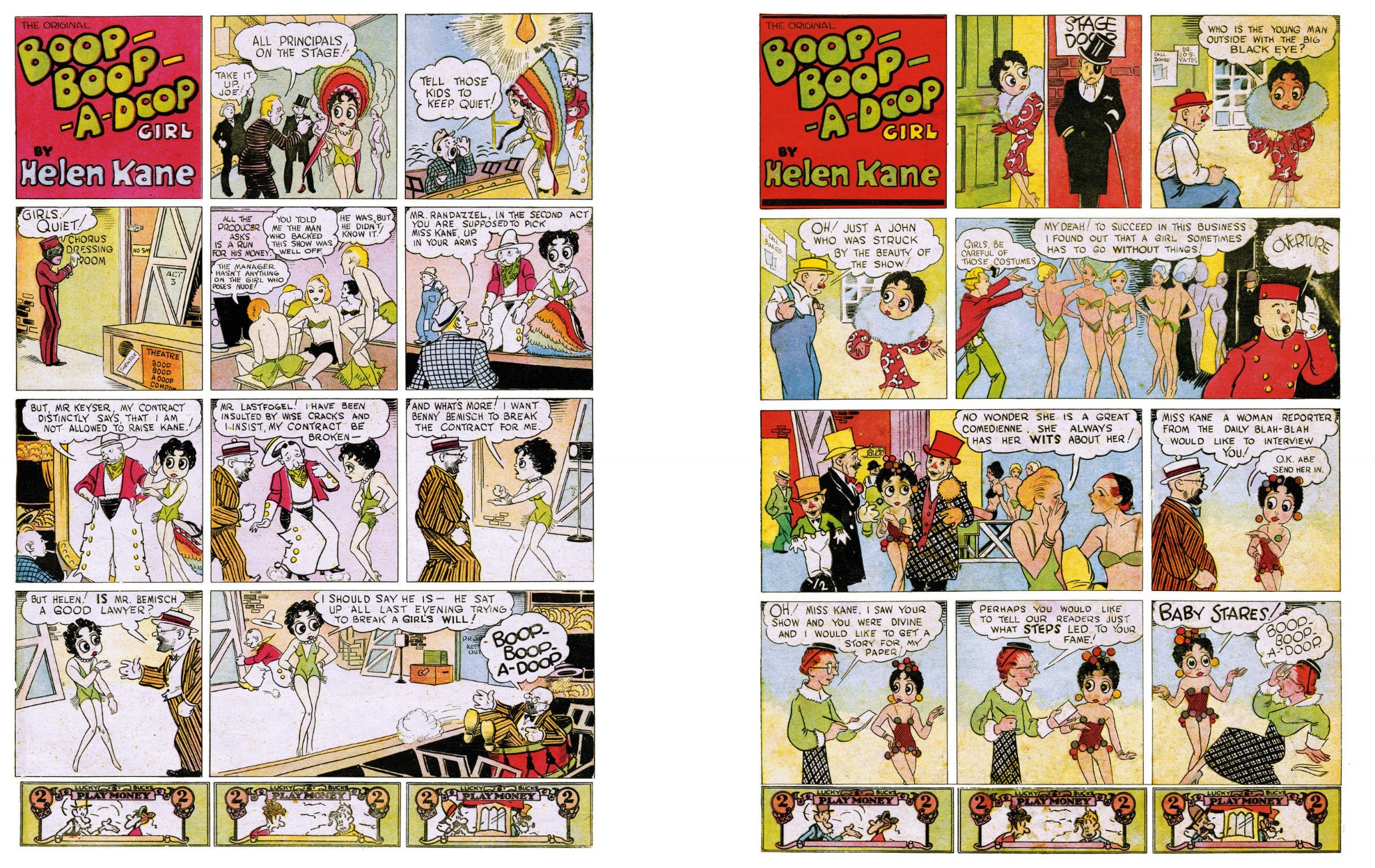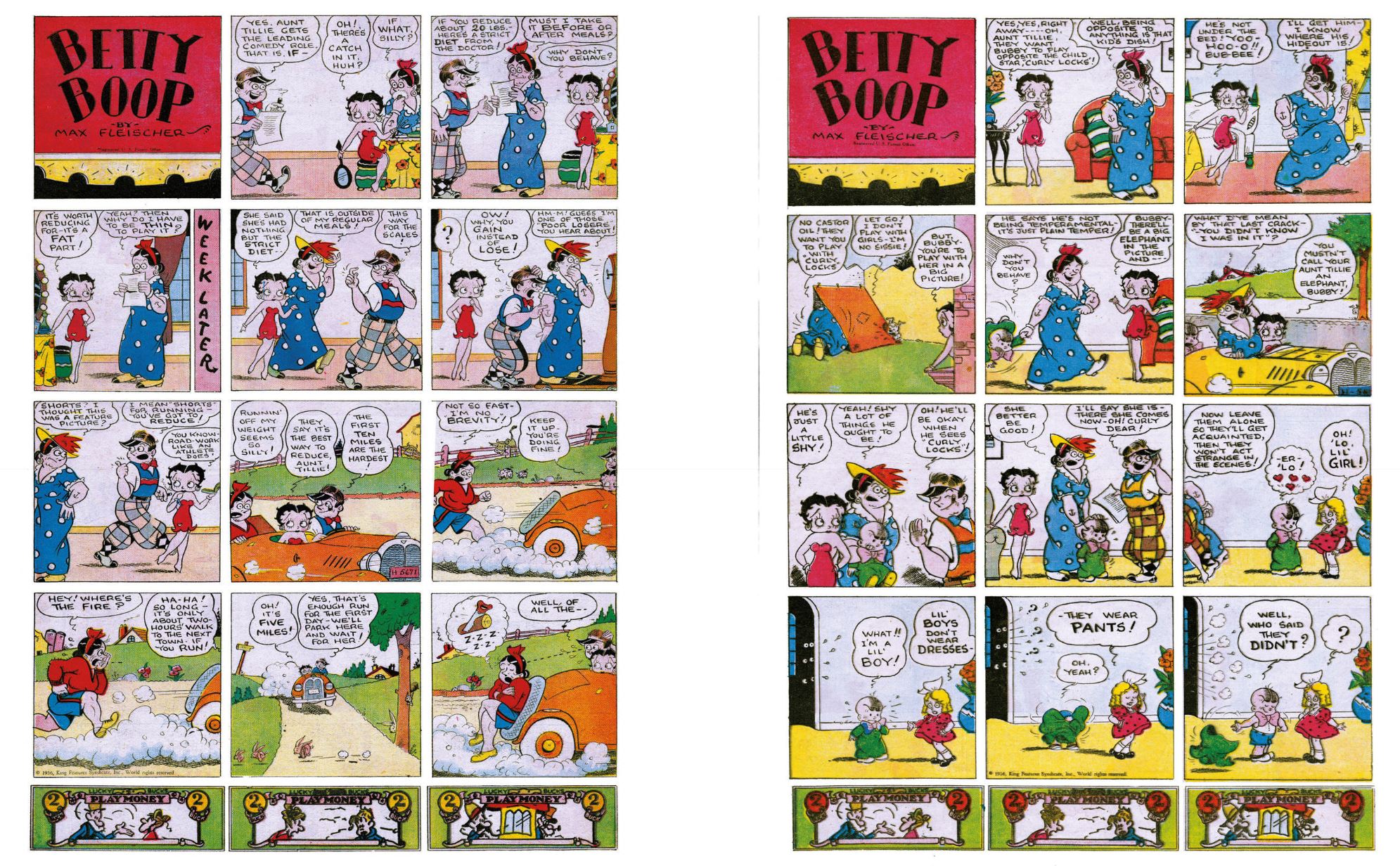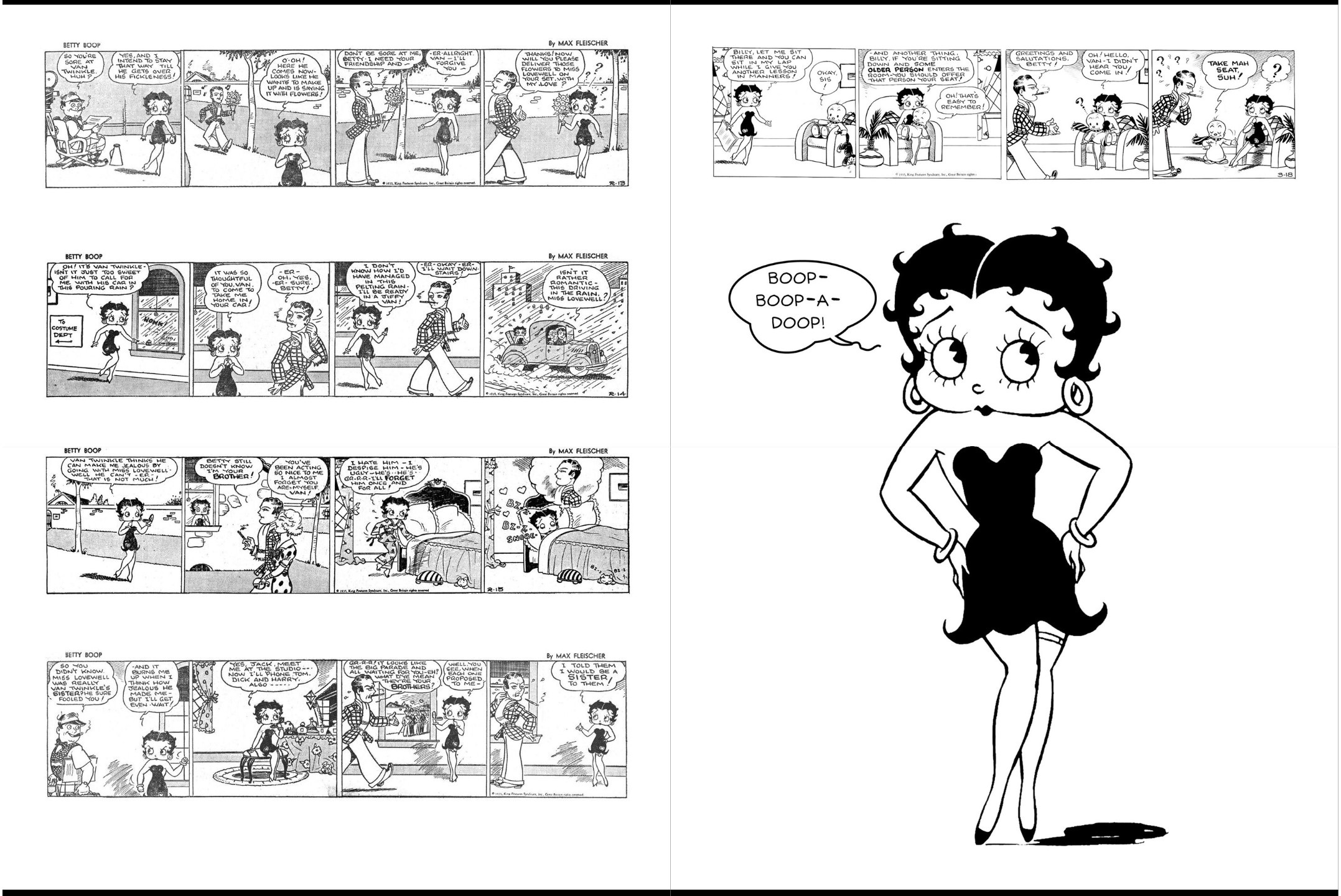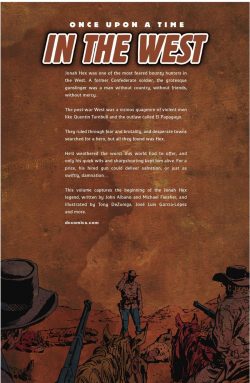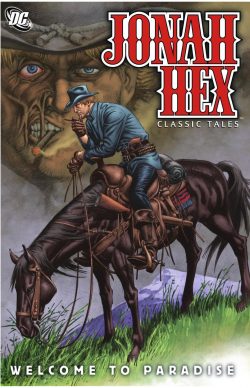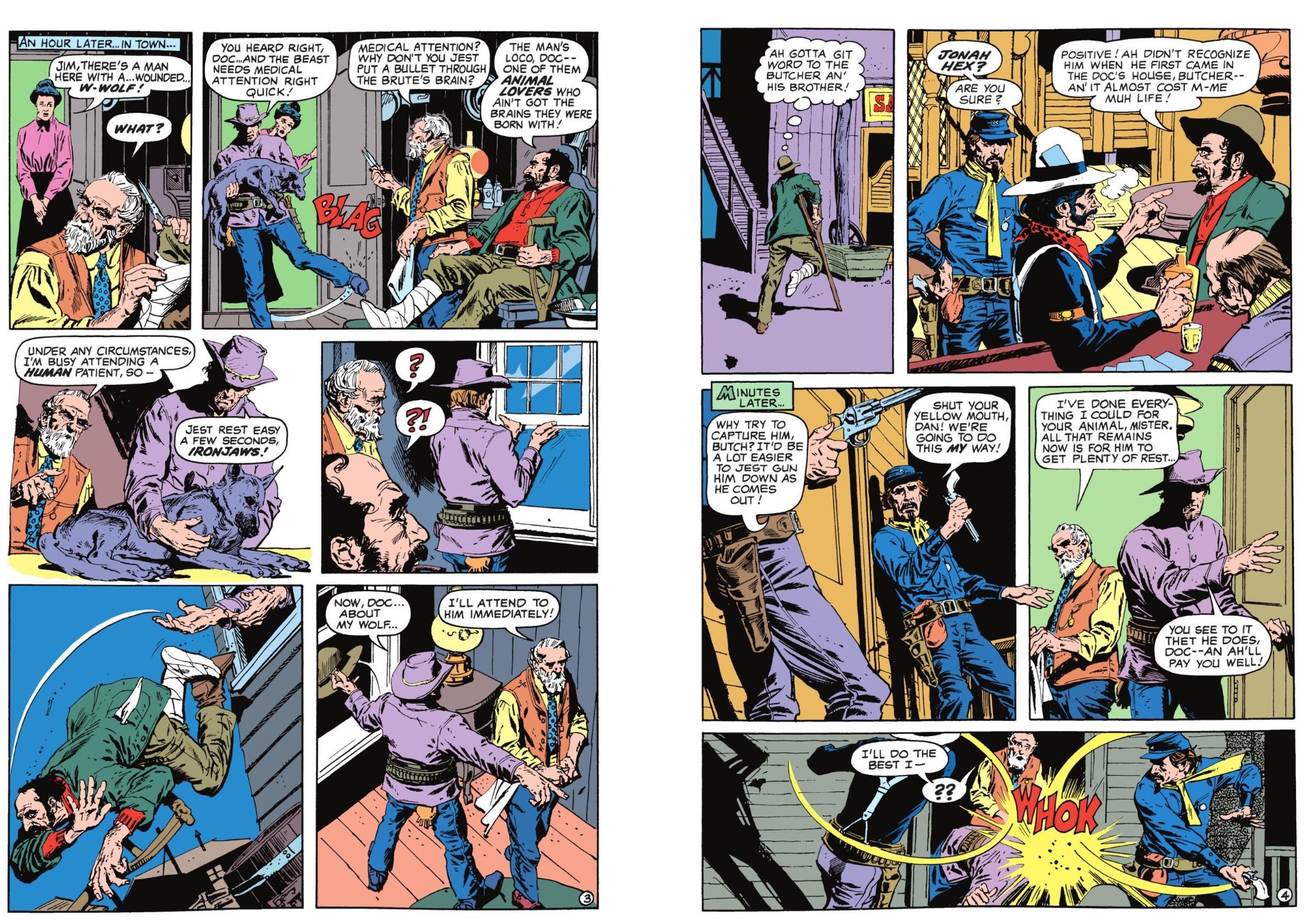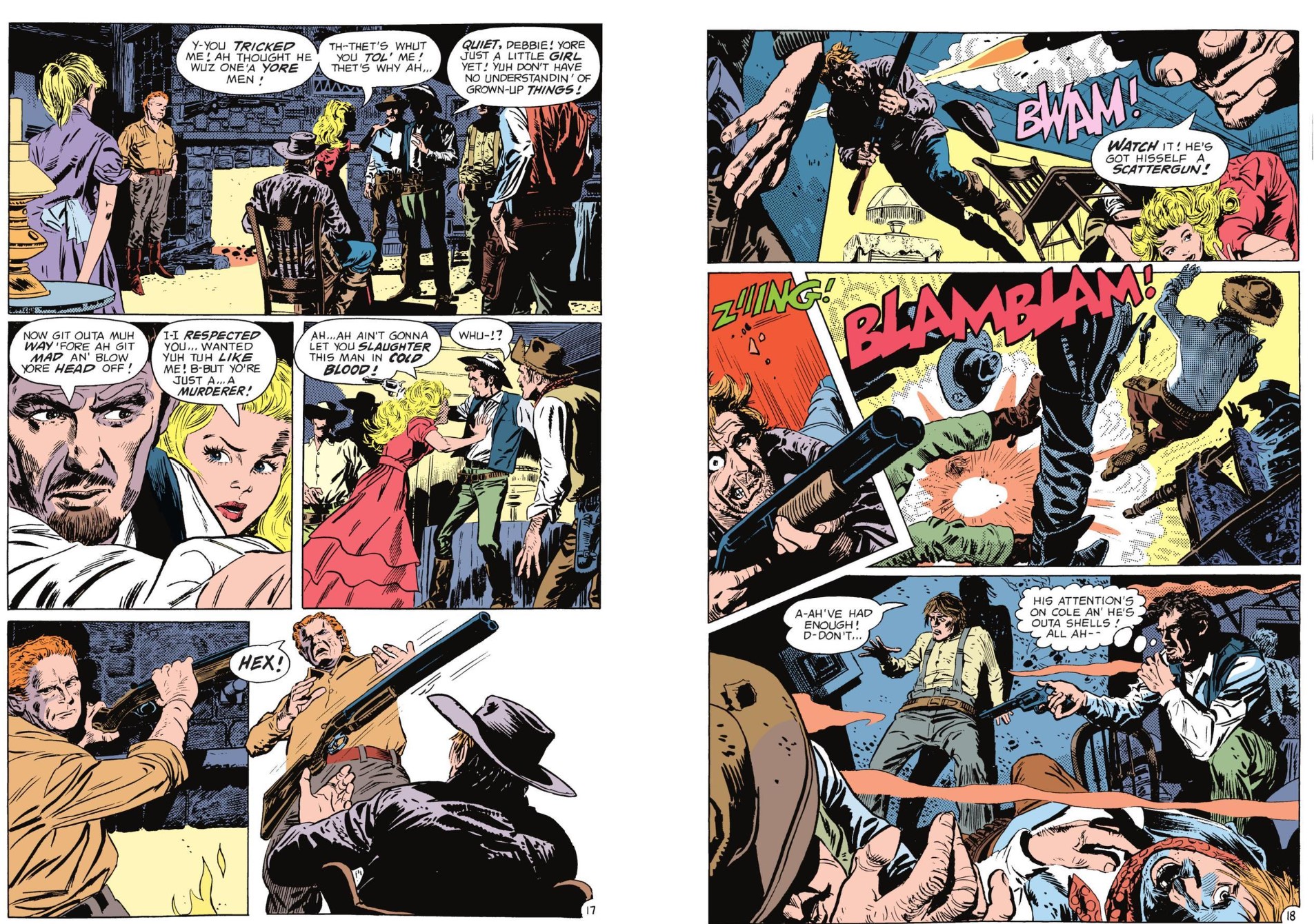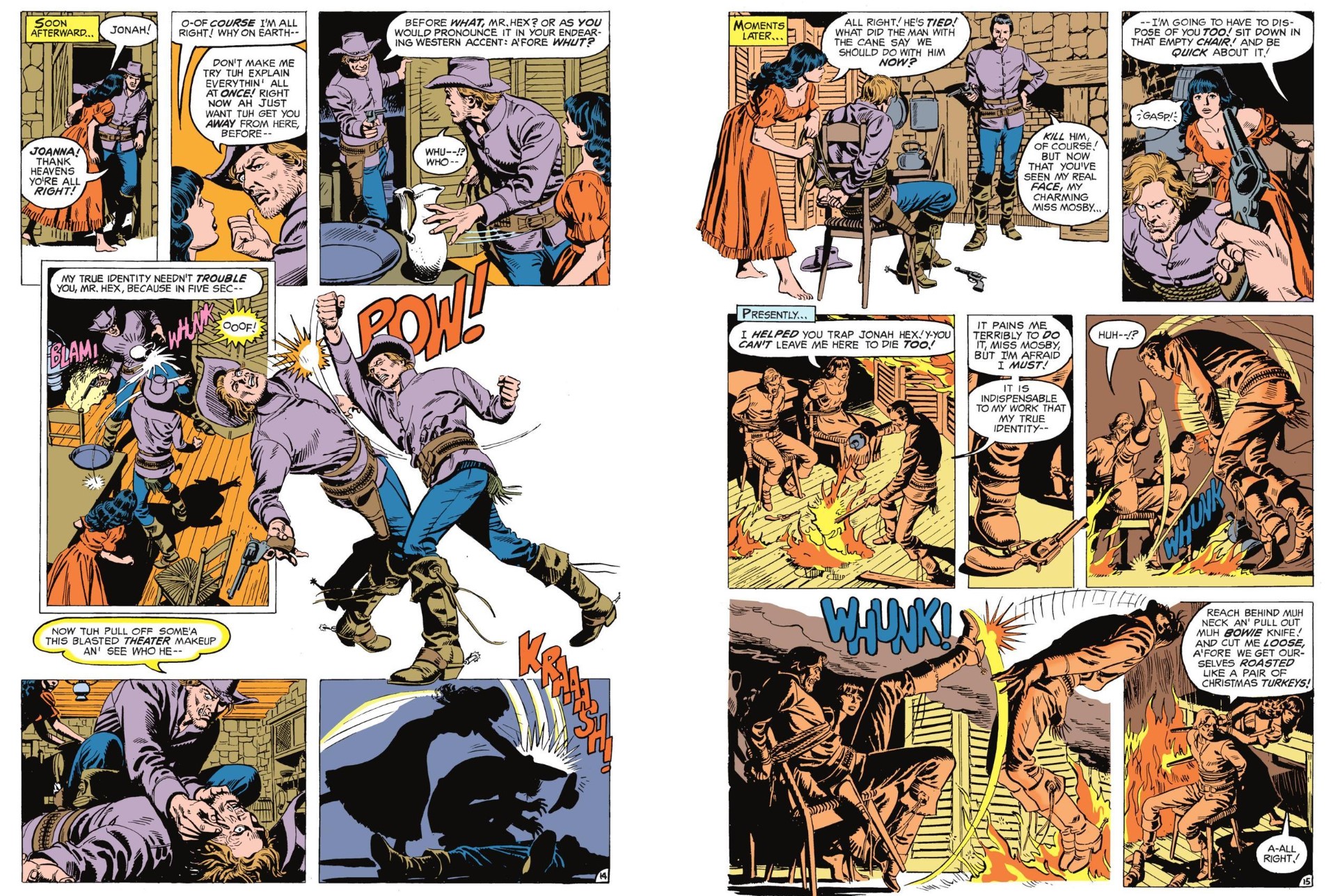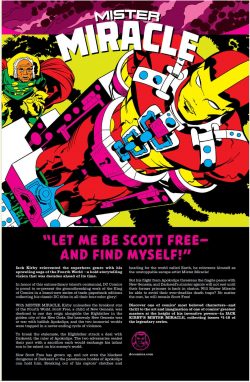
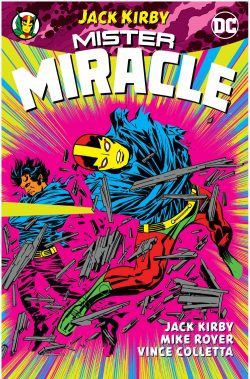
By Jack Kirby, Mike Royer, Vince Colletta, Don Heck, D. Bruce Berry, Greg Theakston, Mike Thibodeaux, Dick Giordano, Mike Machlan, Bill Wray, Steve Rude & various (DC Comics)
ISBN: 978-1-4012-7717-8 (TPB/Digital edition)
This book includes Discriminatory Content produced in less enlightened times.
Today in 1971 American comic books again changed forever with the third component of a graphic masterpiece. On December 1st 1970 newsstands saw Superman meet counterculture head-on courtesy of Jack Kirby in a title like no other ever before. It was only one strand of a bold experiment that quite honestly failed, but still undid and remade everything. That was Forever People #1 and it was followed on December 22nd with New Gods #1. Then on January 14th 1971 comic books delivered a NEW new world that just kept on changing…
When Jack Kirby returned to the home of Superman in 1970 he was working on one of the most powerful concepts in comic book history. The expansive grandeur of his Fourth World saga grafted a complete new mythology onto and over the existing DC universe and blew the developing minds of a generation of readers. If only there had been a few more of them…
Superman’s Pal Jimmy Olsen, where Kirby revived his 1940s kid-team The Newsboy Legion, introduced large-scale cloning in the form of The Project and hinted that the city’s gangsters had extraterrestrial connections. He then moved on to a main course beginning with The Forever People, intersecting where appropriate with New Gods and Mister Miracle to form an interlinked triptych of finite-length titles that together presented an epic mosaic. Those three groundbreaking titles collectively introduced rival races of gods, dark and light, risen from the ashes of a previous Armageddon to battle forever… and then their conflict spreads to Earth…
Kirby’s concepts, as always, fired and inspired contemporaries and successors. Gods of Apokolips & New Genesis became a crucial keystone of DC continuity and integral foundation of that entire fictional universe, surviving the numerous revisions and retcons which periodically bedevil long-lived comics fans. Many major talents dabbled with the concept over decades and a host of titles have come and gone starring Kirby’s creations. That’s happening now even as I type this…
As previously stated, the herald of all this innovation had been Superman’s Pal Jimmy Olsen, which Kirby had used to lay groundwork since taking it over with #133. There readers first met Darkseid, The Evil Project, Intergang and so much more, but it was also used as an emotional setup for a fascinating notion that had seldom if ever previously troubled the mighty, generally satisfied and well situated Man of Tomorrow…
After The Forever People #1, crossovers with DC mainstays were largely sidelined in favour of a tense and relatively isolated new normal. Those kids were Kirby’s way of depicting how conflict affected peripheral players and dragged them in and down, and the next (and most important) component was seeing seasoned soldiers do their work. New Gods would focus on the war itself…
With that all going on, next came something utterly unexpected: a non-hero who reflected a changing world and sought to capture the turbulent era’s zeitgeist by also looking out for himself and breaking loose of expectations and societal shackles…
Cover-dated February/March 1971 and on sale 55 years ago today, the premiere issue of Mister Miracle – Super Escape Artist sprang the last piece of the puzzle on readers by opening with a sedate set of mysteries balanced with emotional tension and explosive action. The star – notoriously based on Jack & Roz Kirby’s friend (comics genius, magician and escapologist) Jim Steranko – was a fugitive and runaway avoiding (perhaps dodging?) his responsibilities and searching for deeper truths. No matter how wild things got, that set-up was pure reportage…
Inked by Vince Colletta with Kirby doing most of the rest, ‘Murder Missile Trap!’ introduces aging entertainer Thaddeus Brown, an old war horse trying to get back in the saddle, and practicing his old escapology act to win an unwise wager with Metropolis’ Intergang boss Steel Hand. A terrifying test run is interrupted by a young stranger who observes with shock Brown’s apparent suicide and the panic of equally aged assistant Oberon before rushing in to help them.
That act of getting involved leads to orphan Scott Free inheriting the identity and stage persona of Mister Miracle after Steel Hand cheats and has Thaddeus shot and killed. Angry, intrigued and ready to settle down at last (or for a while at least), the wanderer – who has an astounding carpet bag of high tech tricks – wins justice for his predecessor by beating a spectacular rocket trap and decides to try something strange but substantial, for a change.
However, the coils of his past prepare to ensnare him…
The prosaic life of a showman was a beguiling setting as Scott and Oberon planned a comeback and the beloved old stagehand learned just how different the new kid really was. His suspicions of a wider, wilder side were confirmed as the orphanage Scott fled came looking for him and vicious Apokolyptian virago Granny Goodness unleashed the techno-terrors of matter-warping monster Overlord before trapping the targets in the insidious, infernal ‘X-Pit!’
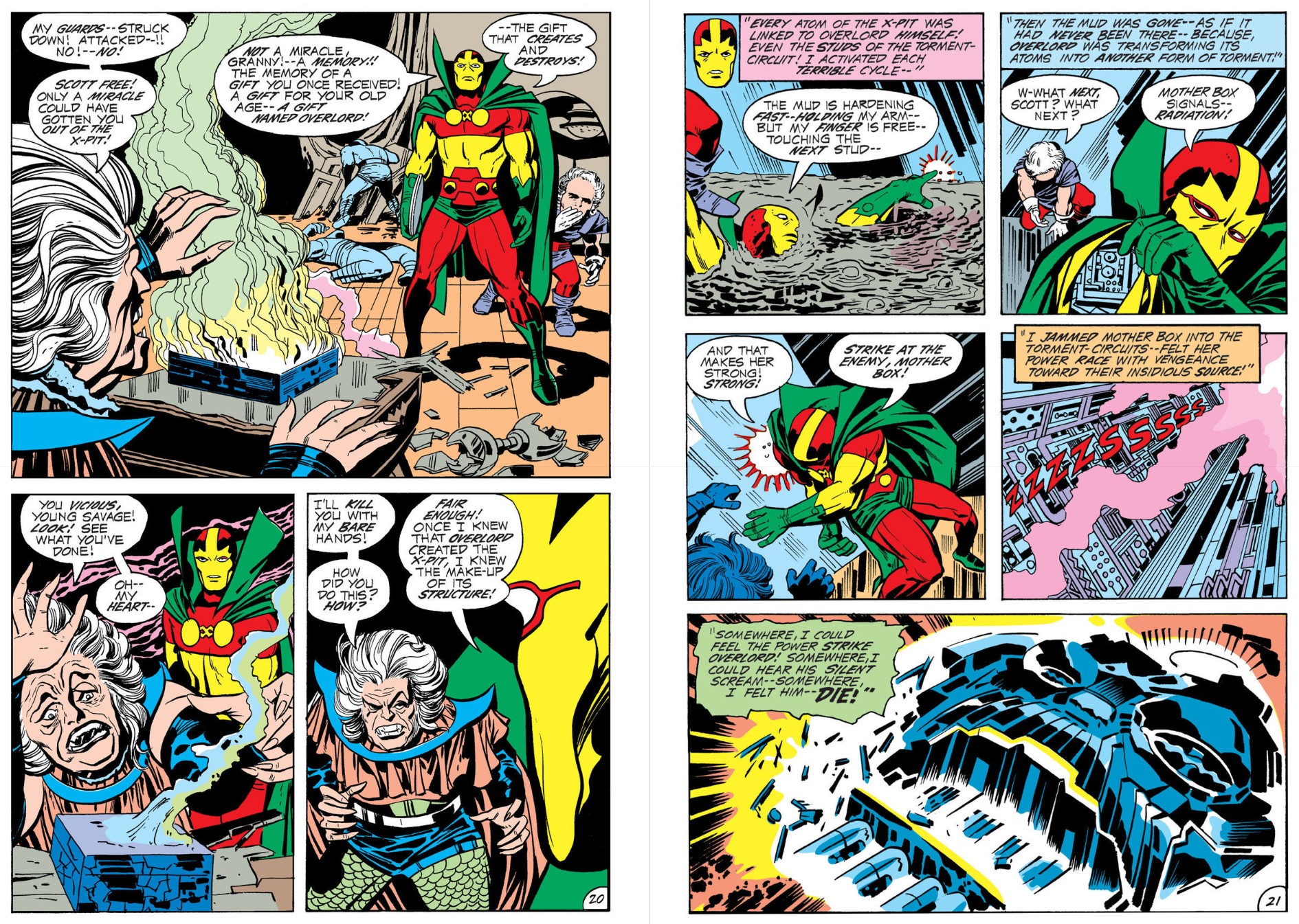
Because comics fans were always abstruse, Mister Miracle regularly outsold its companion titles, but Kirby felt no compunction to explain his expanding pantheon and universe – or indeed space to do so. Here, though, please allow me to lay out some groundwork…
Soon after creation began, gods were born, thrived and perished – primarily by warring with each other. When the Old Gods died in a cosmos-shaking conflagration their perfect primal world was split into two. Eventually cooling fragments congealed into two new yet lesser worlds: the dark vicious globe of Apokolips and gleaming noble orb New Genesis. Over millennia, generations of superior beings of might and majesty populated the spinning spheres. Sadly, a tragic trait New Gods shared with their progenitors was the capacity for destruction and taste for conflict. Denizens of both planets always and inevitably found fresh ways to end each other’s immortal lives.
The tale proper began on joyous, spiritual New Genesis years after the latest all-out war with Apokolips ended. Mighty Orion arrived in paradisical Supertown where deific patriarch Highfather communes with cosmic mystery The Source. The metaphysical conduit despatched the turbulent wolf in their fold to its antithetical hell-world, only to find despot Darkseid gone. Against all treaties, captive humans from Earth had been abducted and probed for signs of the tyrant’s dream.
The lord of Apokolips wanted to do away with free will and rule personally over all that lived, employing an irresistible, intangible ultimate weapon. The “Anti-Life Equation” is a cheat code for totalitarianism: instant negation of choice, and command of all thought. Darkseid’s obsessive search for it led him to Earth where finding it would guarantee total triumph and dispense with his need for Parademons, Dog Cavalry, assorted terror weapons, and his elite inner circle of monstrous minions. Powerful and technologically advanced, for both races the basic tool is Mother Box: sentient circuitry connected to The Source and a lifelong cyber-symbiotic companion, able to communicate, advise and manipulate the physical world…
Mister Miracle #3 opens a bravura double-issue imbroglio as Scott agrees to an honourable duel with dishonourable disembodied robot-wearing intelligence Doctor Bedlam. Darkseid’s war code is strict and binding and finds the escape artist challenged to make his way out of a packed 50-storey skyscraper. The problems comes because the edifice is sealed tight and every person inside it is a raving homicidal maniac thanks to mental murderer Bedlam’s administering of ‘The Paranoid Pill!’…
As Oberon frets back at the Brown mansion, he is visited by an old friend of Scott’s, but master warrior Big Barda is not out to assassinate the runaway. She seems more interested in his wellbeing and fate and teleports to the trap site in time to watch Mister Miracle avoid ‘The Closing Jaws of Death!’ Barda is another abstention from the Apokolips method and a rowdy runaway like no other…
With Mike Royer taking over inking, Kirby’s twin loves – history and movies – are happily exercised and expressed in the next yarn as a manic military martinet (based on James Mason’s Rupert of Hentzau in The Prisoner of Zenda) attempts to humiliate and destroy the rebel in MM #5. Another stiff-necked clash of Codes of Honour, it sees elite Apokolips soldiers rendition and reclaim Barda, making her freedom contingent on Scott surviving the Wile E. Coyote-like inventions of ‘Doctor Vundabar and his Murder Machine!’ Of course he does just that, and the issue continues with the first episode in an occasional backstory featurette. Inked by Colletta, ‘Young Scott Free!!’ shares boyhood exploits of Granny’s appalling orphanage/war college where cadet Free just doesn’t fit in. He complains, he has ideas and, when no one’s looking, has extra lessons from New Genesis in the form of emotionless even-handed God of Scientific Curiosity Metron…
Humour and a heaping pile of unleashed agita underpin the wry tale of a sharp-talking conman seeking to profit off a creative star’s efforts when obnoxious, dissolute ‘Funky Flashman!’ (MM #6) seeks to monetise Scott’s act, only to run full on into “debt-collectors” from Apokolips. Happily settled in with Scott, Barda is targeted by old squadmates Stompa, Lashina, Bernadeth and Mad Harriet who have come to take her home to the Female Furies battalion she used to lead. They don’t like Flashman either and really resent missing her and taking him thanks to some sneaky sleight-of-hand…
Another brief Royer-inked ‘Young Scott Free!!’ episode finds the daily drugged & programmed dissident becoming more brazen and noticeable in his rebellions, prior to #7 opening an ‘Apokolips Trap!!’ Done with constant ambushes Scott resolves to return to the hell planet and win his right to permanent life-long liberty from Granny’s reprisals, but it all goes awry when battle-hungry Barda comes along, forcing the duo to fight the length of the evil kingdom against “Lowlies”, soldiers, war-machines and even Darkseid’s chief assassin Kanto before this duel of honour can even begin…
‘Young Scott Free!!’ adds nuance with the tale of that time the boot camp pariah somehow trashed deadly Parademons in a training exercise, after which the main event concludes in MM#8 as Scott surrenders to his nemeses and becomes a showpiece execution event against an unbeatable psychic horror during ‘The Battle of the Id!’ Unwilling to let her lover languish or die, Big Barda organises a Female Fury foray that rocks the joint, but as always, she needn’t have bothered…
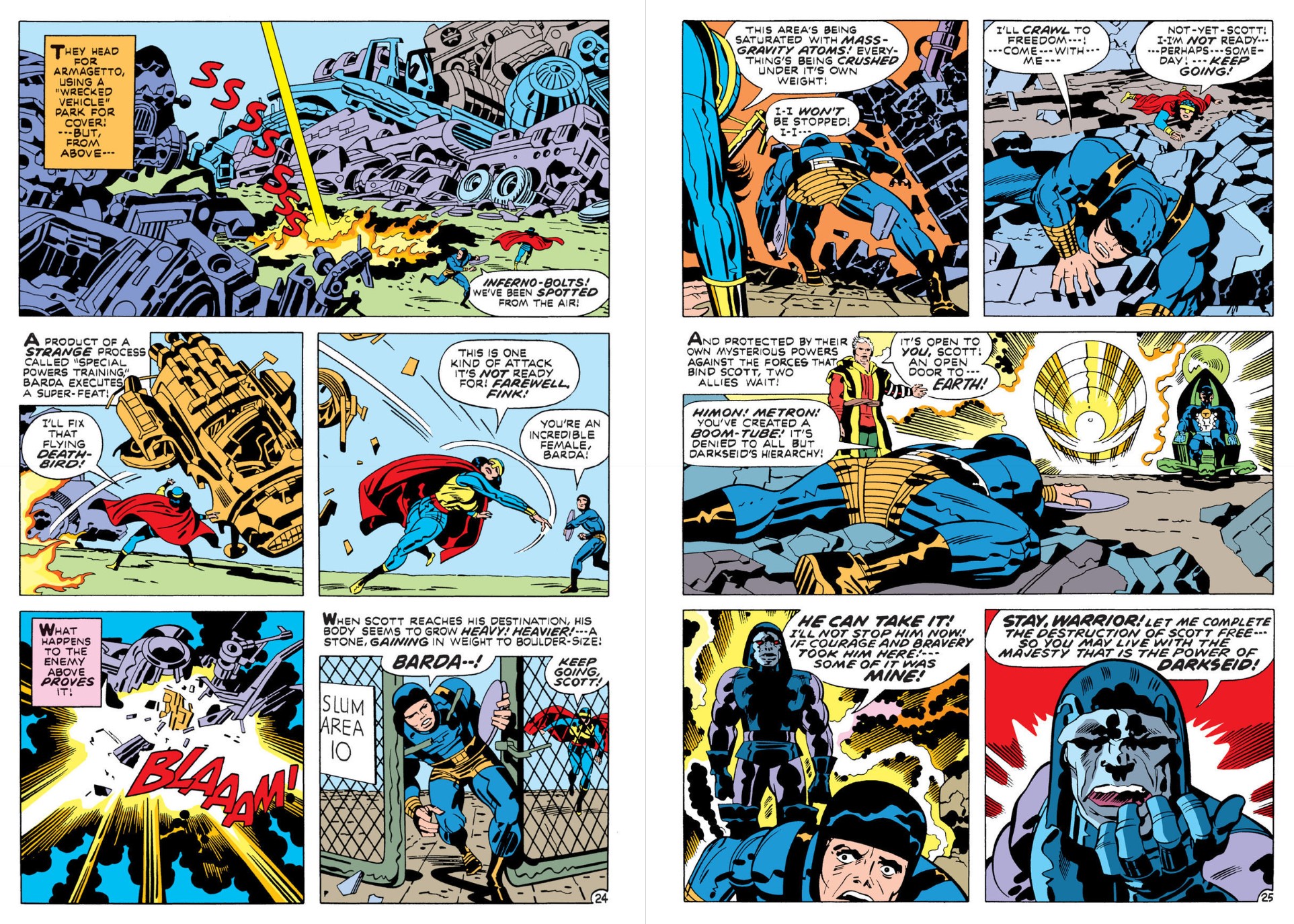
In New Gods #7 Kirby revealed the origins of the current war and how Darkseid’s son Orion was traded for Highfather’s infant to become tokens of intent and hostage princes to assure a ceasefire. Now Mister Miracle #9 concludes the history lesson with the tragic how and why young man Scott Free breaks the truce, escapes the chains of expectation and chooses his own path after meeting outlaw philosopher ‘Himon!’ Cover-dated July 1972, the tale uses the last exploit ‘Young Scott Free!’ to show how, with rising-star soldier/covert rebel Lieutenant Barda, Scott challenged and dodged the system, no matter the cost…
Kirby’s intention for his Fourth World trilogy was three 12-chapter finite series working in tandem, but fate and sale demanded otherwise. Forever People and New Gods both ceased abruptly and without those intended conclusions, but something else happened for the Super Escape Artist…
The entire notion was a huge risk and massive gamble for an industry and company that was a watchword for conservatism. It was probably incredibly tough for editors and publishers to stop themselves interfering, and they often didn’t. With numbers low, and spooky stories proliferating everywhere, Kirby was pressured to drop the weird stuff and concentrate on old standards. Despite promises of support and complete autonomy, the King had already surrendered much to get his dream rolling. Crushing deadlines and ridiculous expected monthly page counts were one thing, but management had no understanding of what he was planning and promotion was non-existent. Thus, inevitably these series failed to find sufficient sales to keep on until that planned and promised conclusion. Nobody in comics argued with numbers so Forever People and New Gods #11 were the last, cancelled before Kirby could complete his grand experiment.
… Except Mister Miracle carried on. Its sales warranted continuation so with a sharp change of emphasis anticipated and accommodated by Kirby and Co, #10 saw Scott, Barda and AWOL ringleader Stompa, Lashina, Bernadeth & Mad Harriet move to Earth in a tense pause and apparent détente. With time on their hands the squad became an entertainment troupe as ‘The Mister Miracle to Be!’ finally explored showbiz and touring. Sadly, they regularly encountered outlandish human-scaled foes, such as high-tech racketeers the World Protective League and their deranged boss The Head, who mistook the wild wonders for international agents sent to derail a bio-weapon blackmail plot…
With Thaddeus’ son Ted and Oberon filling out the roster, #11 promised ‘The Greatest Show Off Earth!’ and delivered once Doctor Bedlam momentarily trapped Scott aboard an exploding spaceship before the extended run carried on with the death-cheaters challenged by an ancient artefact that stacked the odds during a deadly wager. The truth behind ‘Mystevac!’ was cruel, shocking and transient…
Next the hardworking stiffs were hijacked by a deranged fascist sect and dumped in ‘The Dictator’s Dungeon!’ (obviously not for long!) after which the growing horror trend saw them stumble over Satanists with an even more sinister secret in #14’s ‘The Quick and the Dead!’
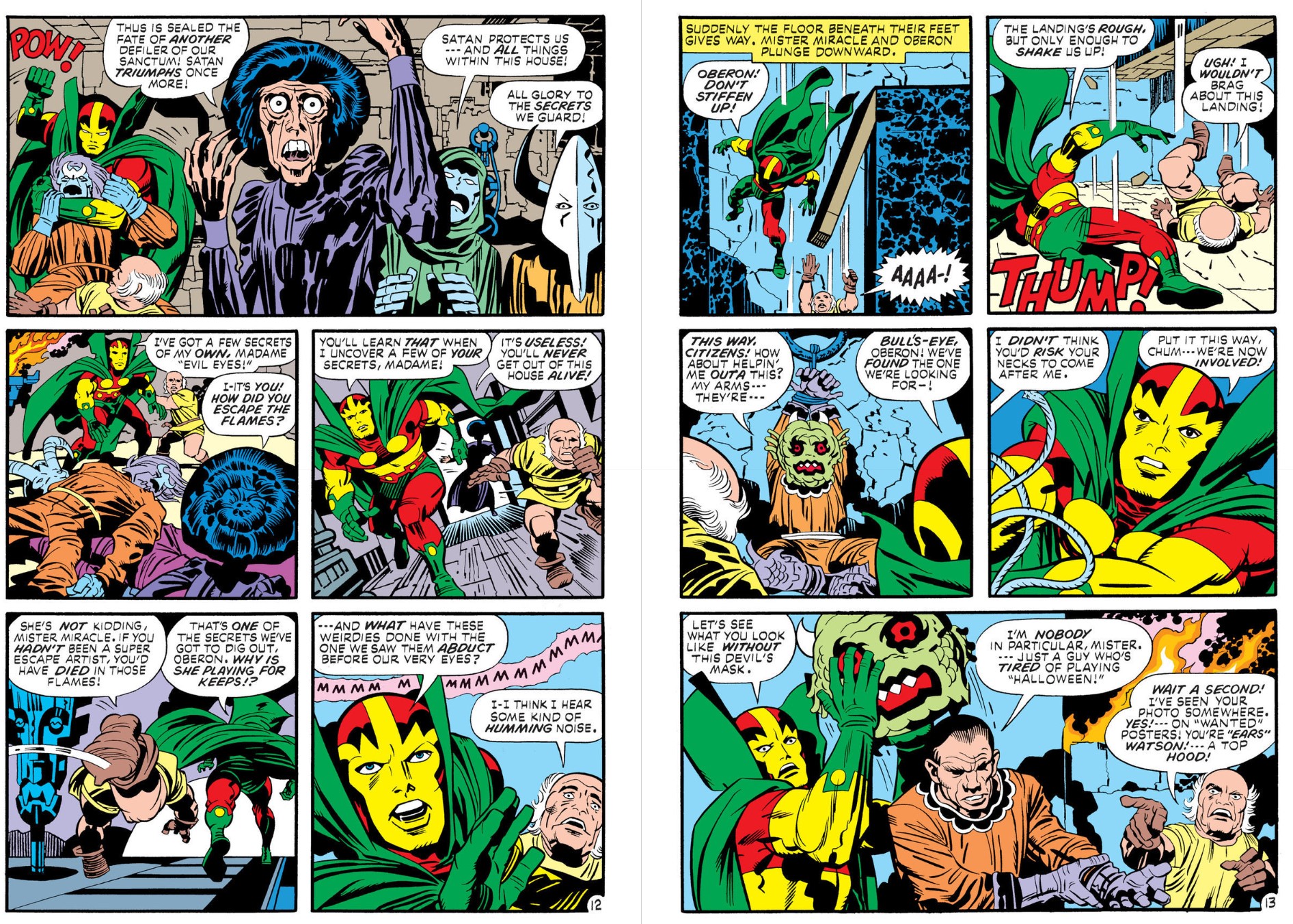
The tone of those troubled turbulent times was then acknowledged by the introduction of a smart, capable black kid. ‘The Secret Gun!’ found Mister Miracle and friends fostering a witness to murder and eventually hiring him as the next big thing in escapology as seen in follow-up yarn ‘Shilo Norman, Super Trouble!’ as the team clash with invasive “insecto-sapiens” created by Professor Egg – a shrinking savant set on conquest and consumption. Then crime-busting returns with Scott, Barda and Shilo mistaken for hitmen when they inadvertently book in at ‘Murder Lodge!’ and are extravagantly earmarked for execution…
Eventually the encore came to a conclusion as – cover dated March 1974 – Mister Miracle #18 saw all the New God players become ‘Wild, Wild Wedding Guests!’ as Scott and Barda tied the one knot they couldn’t defy before moving in with his dad on New Genesis.
That followed one last all-out assault by Darkseid’s minions which went some way to finally looping readers back to the overarching spectacle as lovers from warring worlds decided to wed in the face of impending doom.
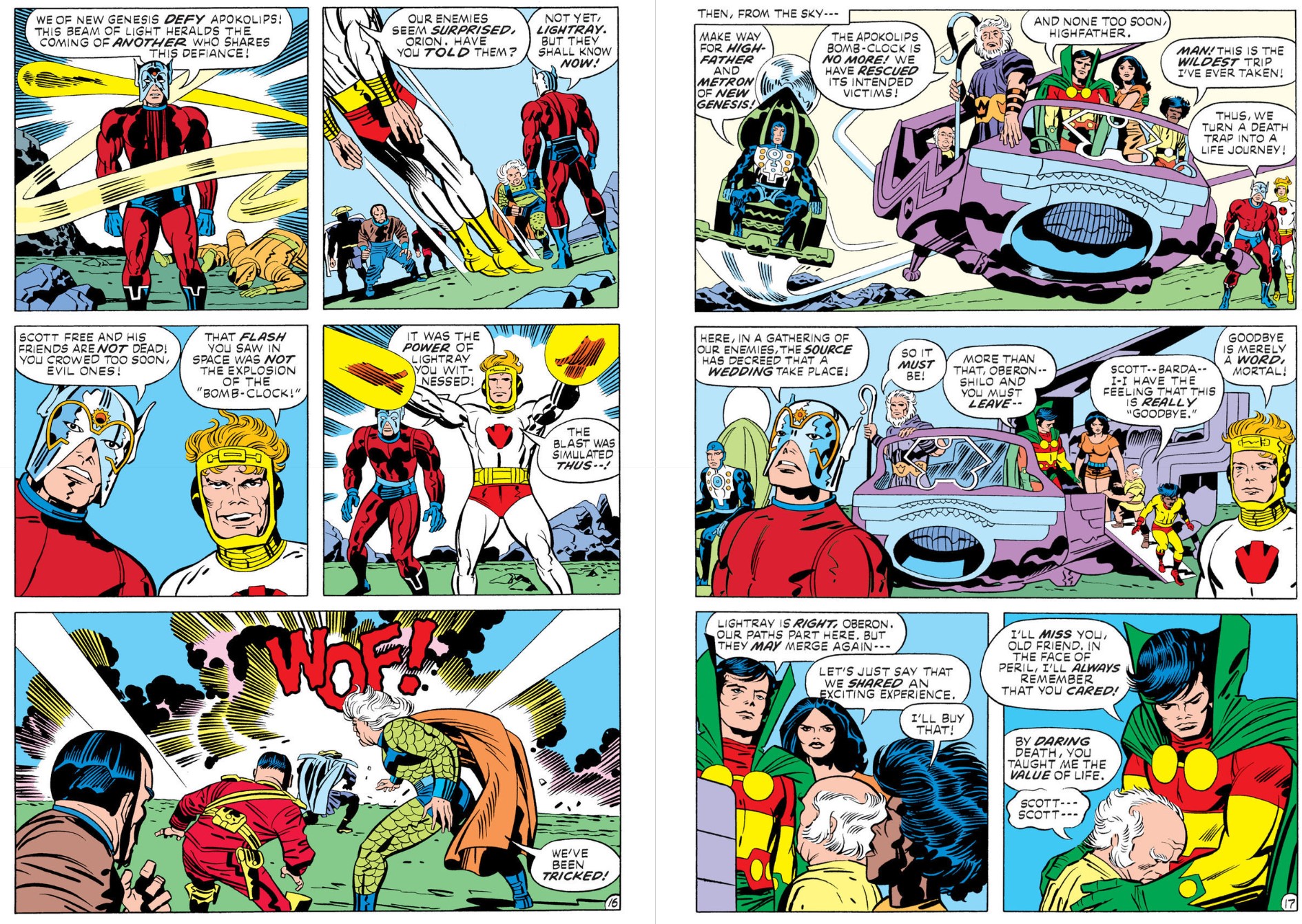
With that the saga was paused but time and changing tastes soon brought sequels and, at long last, Kirby’s return to craft a proper ending… of sorts. We’ll get to those in the fullness of time-space…
Mister Miracle remained a uniquely reusable concept for decades with Scott, Barda and the crew regularly getting guest gigs and new shots at the limelight in Fourth World revivals, DC titles ranging from Action Comics to Brave and the Bold to Justice League, and in solo comeback series.
This cosmic compendium offers bonus ‘Mother Box Files’ material comprising pertinent Kirby characters as revisited by himself, and select inkers from assorted DC Who’s Who fact files. Here a tremendous group treatment of The Female Furies, inked by Greg Theakston, backs up a clutch of solo entries for ‘Mister Miracle’ (Giordano), ‘Big Barda’ and ‘Granny Goodness’ (Theakston), ‘Doctor Bedlam’ (Mike Machlan), ‘Funky Flashman’ (Bill Wray) & ‘Virman Vundabar’ embellished by Steve Rude. Closing the wonderment are more delights in ‘The Art of Jack Kirby’, including an unused cover for MM #7 plus a selection of stunning pencilled pages from the original run.
That metaphor for freedom and a hero who chooses to stop running, to turn and to fight is a fundamental aspect of fiction, and one that will always deliver the goods. You know what to do so what’s holding you back?
© 1971, 1972, 1973, 1974, 2017 DC Comics. All Rights Reserved.
Today in 1863 Richard F. Outcault was born as were Golden Age artists Vince Alascia in 1914 and John Tartaglione in 1921. Filipino artist Rudy Nebres joined the crowd in 1937.
Fictionally, Elzie Segar’s Thimble Theatre debuted Castor Oyl today in 1920 and British standby Comet launched in our smoggy foggy newsagents today in 1950.
On a sad note, the deeply underappreciated Pat Boyette (Flash Gordon, The Phantom, Peacemaker, Blackhawk) passed on today in 2000.
